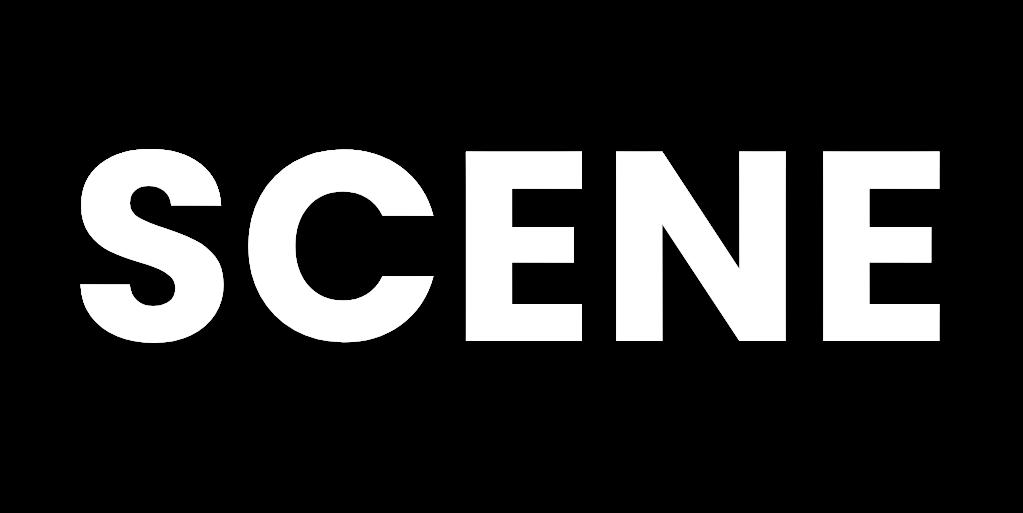






Editor-HelenAbbott
Design-KeriannO'Rourke
AssistantDesign-AnnaNorriss
Proofreader-JanetSchorer
Proofreader-EmilyJaneGrant
Advertising-TomScott
ISTA

LakesideOffices
TheOldCattleMarket
CoronationPark
Helston,Cornwall
TR130SR
UnitedKingdom
office@ista.co.uk
SUBSCRIPTIONS
DigitalcopiesofSceneare availablethroughtheISTAShop. www.ista.co.uk




To receive member benefits and more

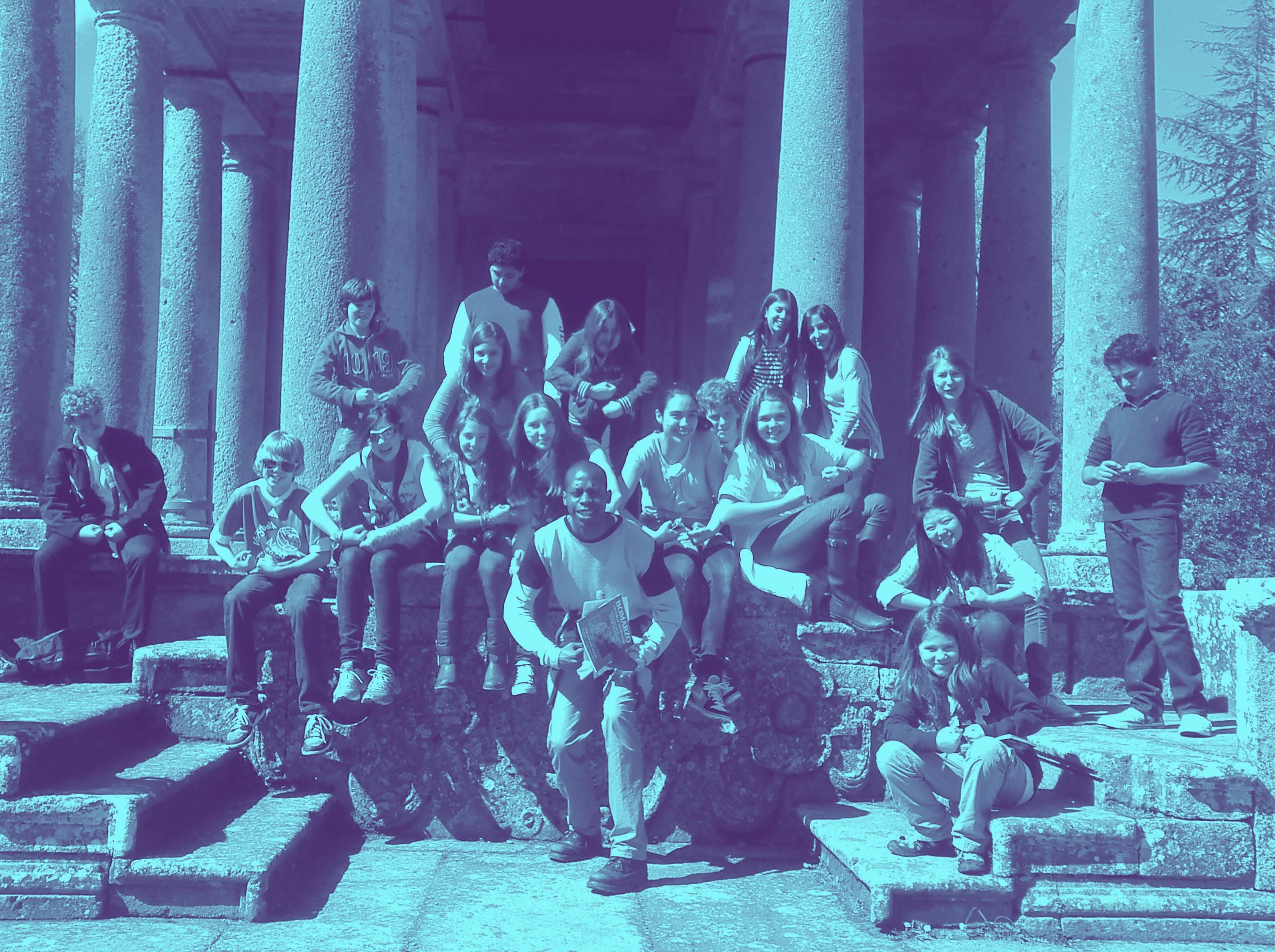

year.Formostofus,theworstofthe pandemichaspassedandIhopeyoufeel optimistic,enthusiasticandexcitedabout thepotentialofwhat’stocome.
‘Excited’ is a word you will have heard ISTA staff use again and again recently because it best describes how we feel! We have had such a busy few months creating, developing and refining much of what we do and Scene has not escaped that. So, it is with immense pleasure and anticipation that we launch this issue, the first of our new look theatre journal.

As editor, I would like to extend a very warm welcome to you all - regular readers and new We are thrilled to bring you features and articles written by a truly impressive collection of artists and educators.
This issue is focussed on exploring the world through theatre. Topics covered include Verbatim Theatre; arts in criminal justice; theatre and wellbeing; storytelling; and theatre in challenging environments.
We also have units of work, case studies, profiles and an interview with ISTA Patron and Professor of Creative Education at the University of Warwick, Jonothan Neelands.

I take this opportunity to thank our contributors, all of whom have volunteered their time and expertise. I see such a bright future for Scene and believe, with your support, it can continue to educate and inspire the theatre community over the coming years. I am excited (thrilled, exhilarated, elevated, animated, enlivened, electrified, stirred, moved, delighted…) for you to read this September issue! Please, as always, stay in touchyou are welcome to contact me at helen@ista.co.uk with your thoughts, suggestions or ideas.
HelenAbbott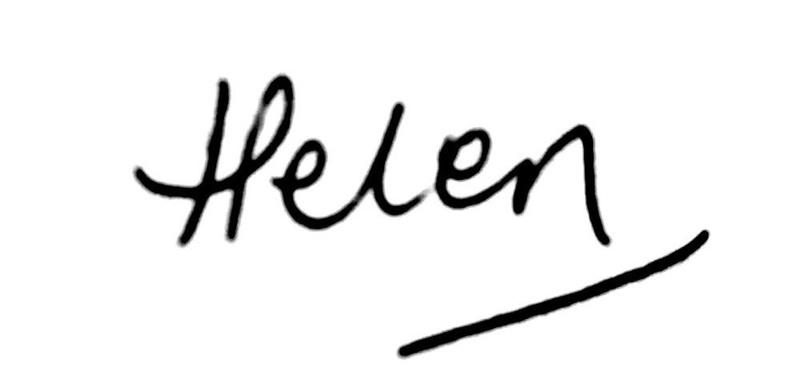 Editor
Editor
The International Schools Theatre Association (ISTA) specialises in global learning through theatre.

We are a UK based charity, founded in 1978, providing transformative learning experiences for educators and young people worldwide. We create communities of learning, working closely with over 240 member schools around the world and we are the International Baccalaureate’s exclusive global provider of teacher training for Diploma Theatre.

We believe in the unique power of theatre and the arts to connect, develop, transform and empower people to become active members and change makers in their own communities and the world.
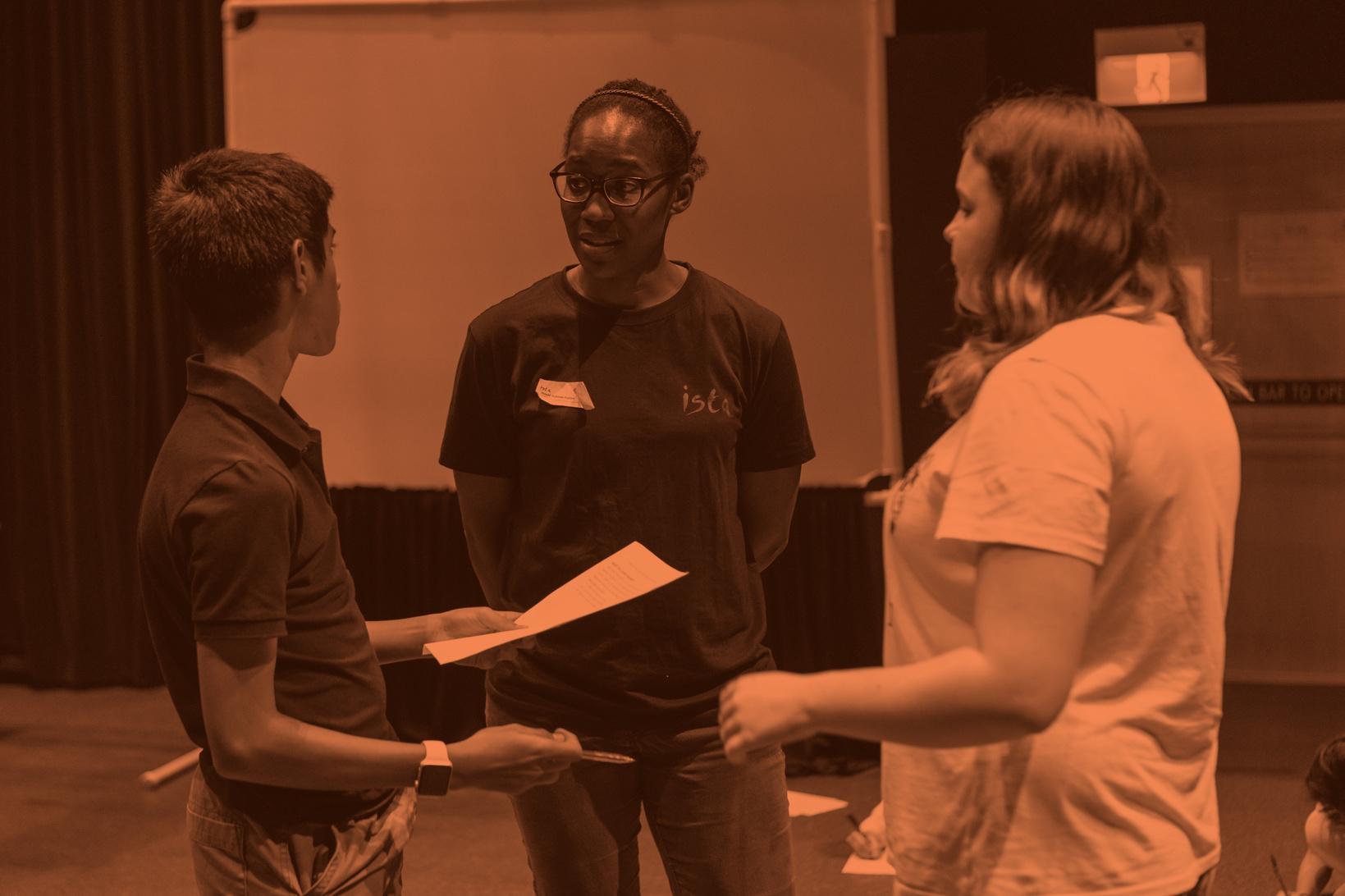


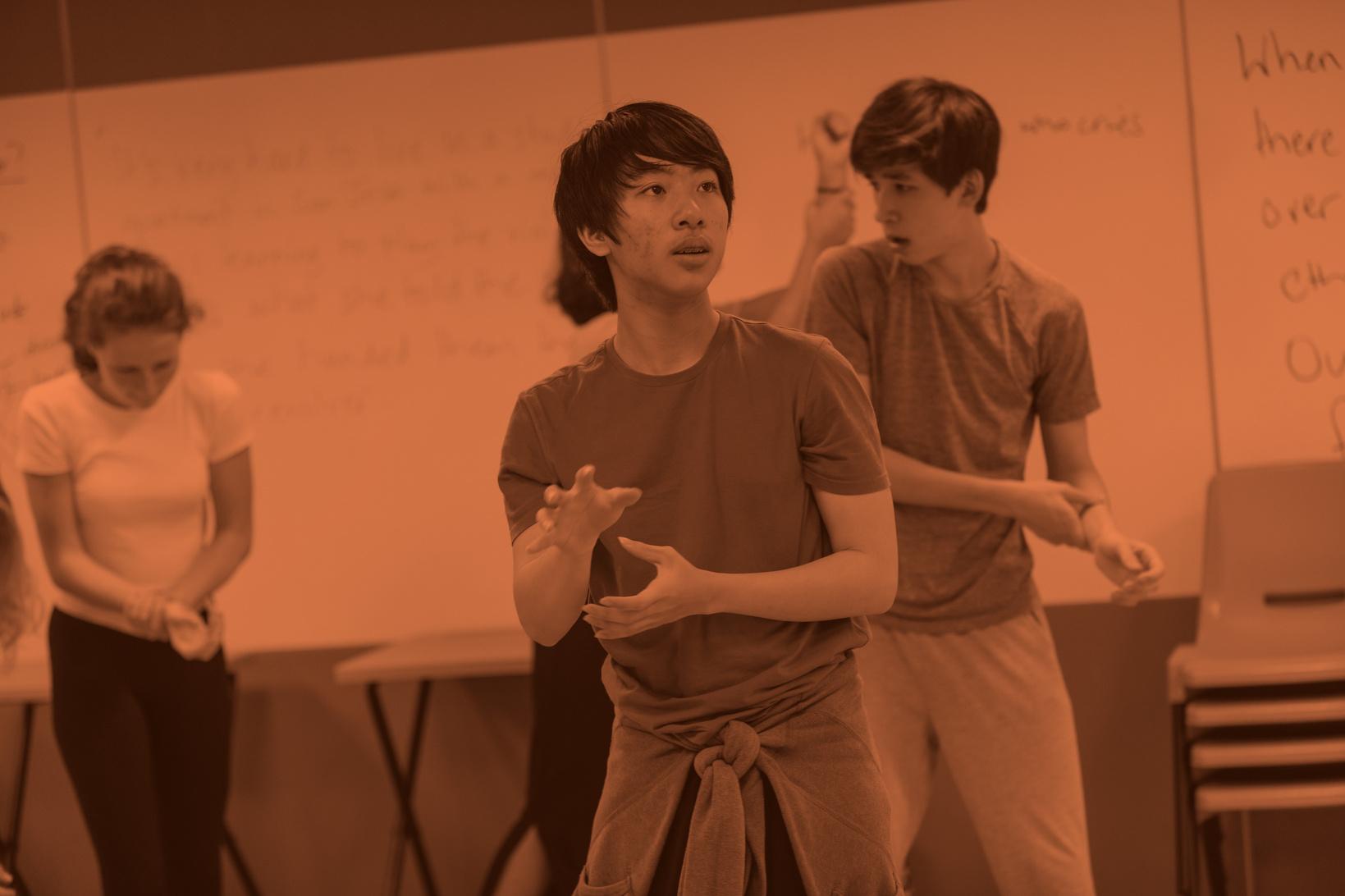

Clickanyofthelinksbelowformoreinformation.
#aworldofdifference
PROFESSIONAL DEVELOPMENT &LEARNING (PD&L)
ARTISTIN RESIDENCY (AIR)
ISTA is an organisation that prides itself on being current, relevant and a provider of high-quality learning experiences. Its focus and one constant over the years has been to work in an international context with a commitment to the role theatre plays in developing internationally minded, responsible young people who will contribute actively to the creation of a better world. Until relatively recently, ISTA considered itself primarily as a producer of high-quality events which engaged international students and educators with learning through and about theatre. The nature and make-up of these events have developed over time, as has ISTA, in response to the dramatic events that have shaped the world over the past two years. As well as this, ISTA has taken into consideration the new thinking regarding international education, new developments in theatre because of the digital and the impact the pandemic has had on young people.

As well as events, ISTA has now classified the range of its learning experiences under the following categories:
Events – These are experiences which are time-limited and with a particular focus (Festivals, TAPS, Professional Development and Learning, IB DP Theatre Teacher Training)
Services - These are bespoke experiences and developed with educational settings and cultural organisations based on their needs (Artist in Residencies, Mentoring, Consultancies)
Programmes and projects - These are long-term initiatives as well as time-limited projects involving more than one encounter (ISTA ACADEMY, Global Digital production)
Resources – These are designed to support global teaching and learning through theatre and the related arts (the ISTA journal Scene, free teaching and learning resources, publications, and instructional guides)
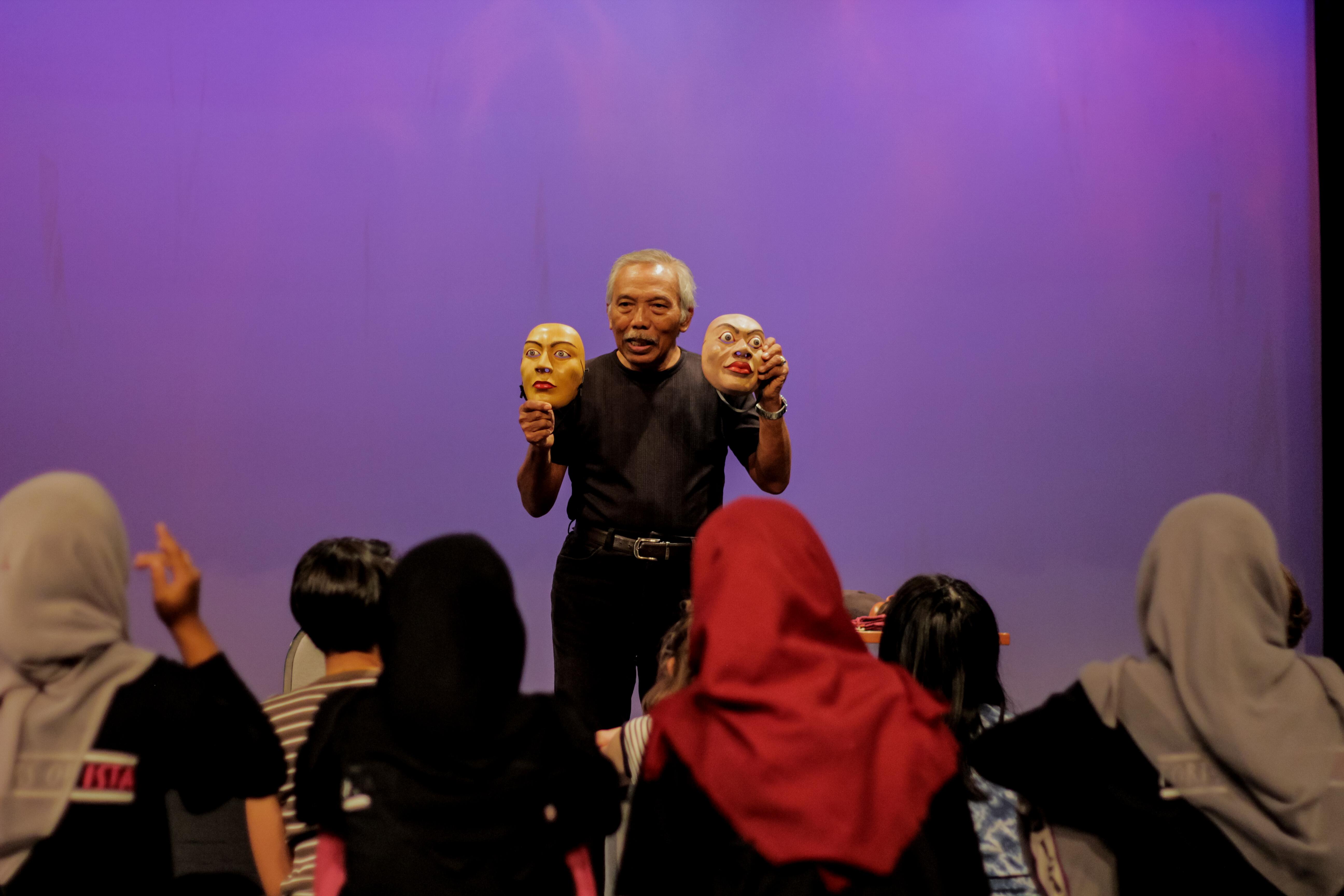
Partnerships – These are initiatives developed with organisations and often engaging with communities beyond international schools: (working with Amala on a project with refugee and displaced young people, sites of learning such as Terezin and the 9/11 Memorial and Museum, working with disabled young people with UCAN Productions)
TheISTA™EnsembleMethod underpinsallISTAworkandis designedtobringpeople togetherthroughtheatreand therelatedartstoform communitiesoflearningthat leadtocollaboration, connection,andempowerment.
ISTA prides itself on being one of the main providers of international artist-educators who are experts in particular theatre traditions and practices Global learning through theatre means offering young people and teachers the opportunity to engage with unfamiliar theatre practices that will broaden their understanding of theatre as well as build international mindedness. This is achieved by bringing together practising artists who have a specialism in a particular practice with learners and educators in different settings as well as offering virtual opportunities for young people or educators who are unable to travel Global learning through theatre also encourages learners to consider the role that theatre plays in different cultures, its origins and roots and the way theatre develops and changes in response to cultural, social, and economic factors. This area of ISTA’s work is also a celebration of the diversity not only of theatre in the world but also of artists. Creating opportunities for cross-border working and interconnection, ISTA also encourages dialogue and collaboration, building networks of artists who bring their own particular skill sets and cultural perspectives together to create theatre experiences that are international and rich.
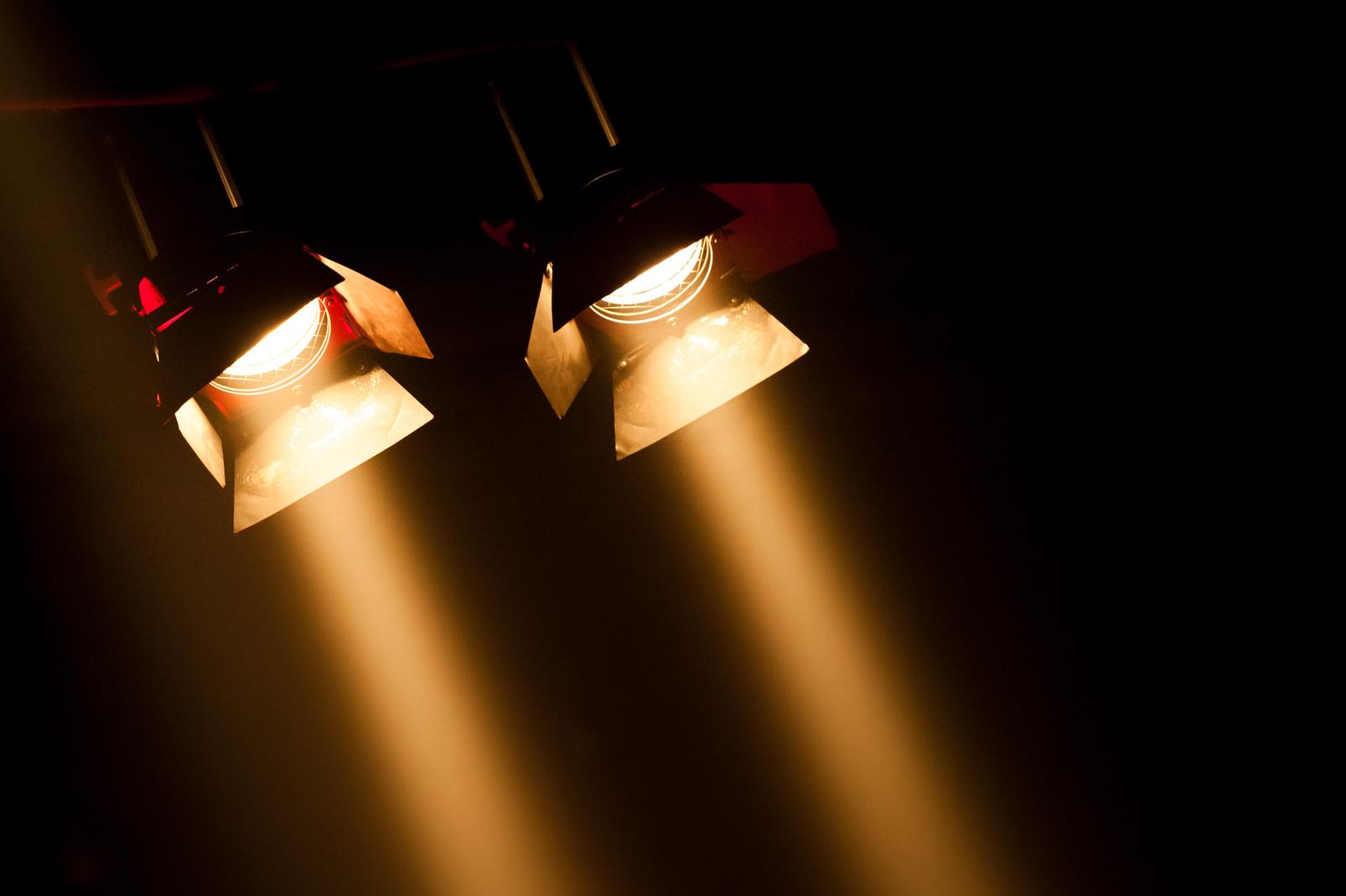
This strand of ISTA’s work relates to everything we do regarding theatre as an art form and theatre-making. Working with an international pool of theatre practitioners and artist educators who inform the development of all ISTA strands, this area is about developing understandings and skills associated with performing, devising, directing, designing and other related arts such as film, music and dance. This also encourages us to work with international arts organisations that are current and relevant. ISTA’s partnership with the International Baccalaureate as the exclusive trainer of Diploma theatre teachers means that we have contributed and continue to be involved in the shaping and the development of international theatre education; providing training, experiences and resources for young people and educators in schools around the world. This brings together contemporary practice in the world of theatre with up-to-date international educational pedagogy and, of course, the ISTA™ Ensemble Method in all things related to theatre as an art form and theatre practice.
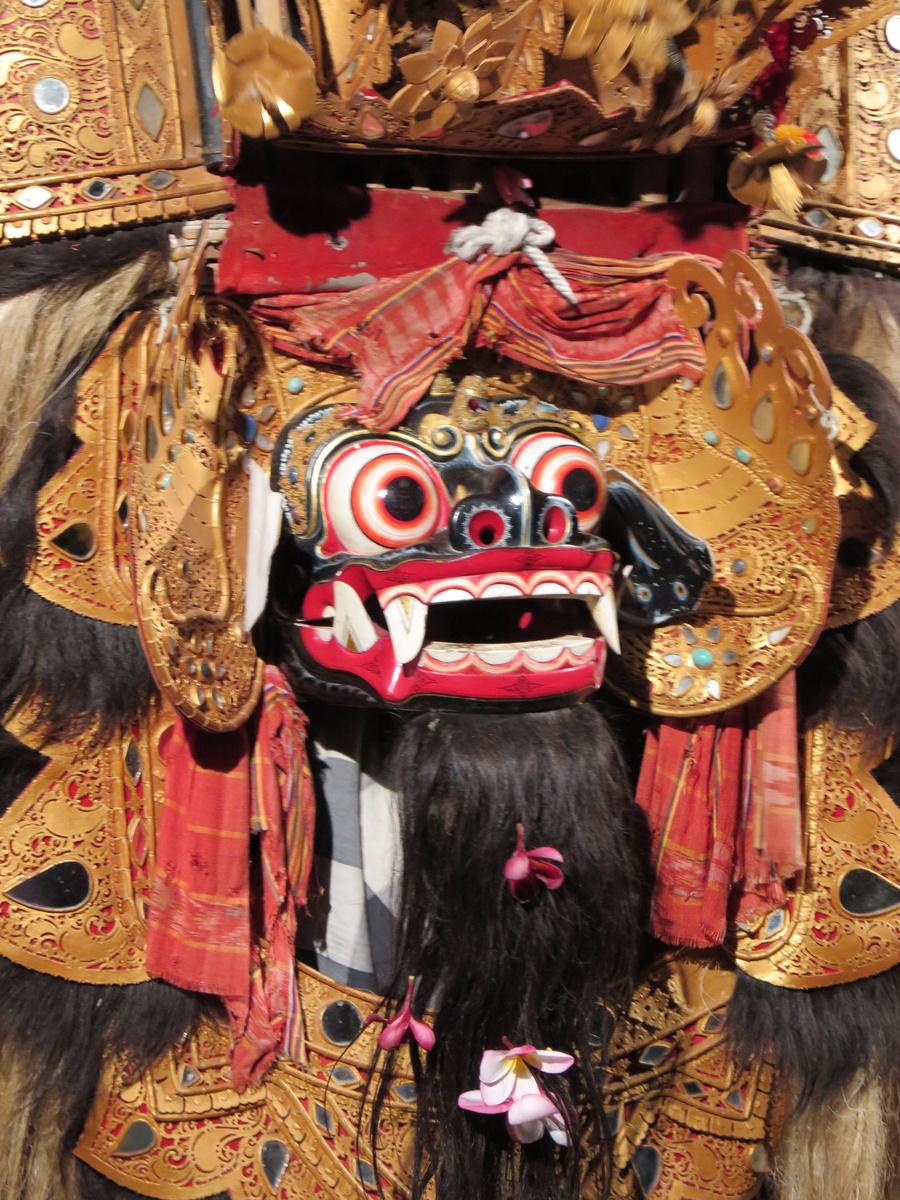
All ISTA’s work is guided by and categorised by the followingstrands.Thesehavehelpedtheorganisation to redefine and focus its work, helping the creation, designandenhancementofitsexperiences:
This area of ISTA’s work focuses on using theatre as a tool for exploring the world. This includes inquiring into social and global issues, examining ISTA’s own communities and those of others as well as the interconnected nature of our world. The purpose of this work is to use the ISTA™ Ensemble Method to give young people a deep understanding of concepts that are key to them as global citizens and the capacity and skills to present their understandings and ideas through theatre. Intercultural awareness and the building of compassionate communities of learning are also key to this area of the work. Central to the exploration of the world through theatre, through ISTA™ Ensemble Method, are pathways to empowerment and action, where learners consider how their ISTA experiences will inform their future development and relationship to their local and to global worlds.
Festivals are the main area where we deliver this area of ISTA work. Each year ISTA selects a global challenge which becomes the focus for the year. This global challenge is designed to be an area of global significance which offers a range of possibilities for exploration. ISTA’s global challenge for 2022-23 A world of difference provides a lens which engages young people with opportunities to explore the world through theatre.
This ISTA challenge offers host schools and artists an imaginative and meaningful inspiration which; can be interpreted broadly, is accessible and has relevance to both the host community and to the world.
The possible areas of learning for festivals and events this year, for example, are:
The post-pandemic world and its challenges for young people
The changes in our communities
Diversity, equity, and inclusion
Social justice
The environment
Making a difference/ changing the world
What it means to be or feel different
A celebration of difference and identities
The arts and how they make a difference
A story-based inquiry approach to ISTA’s global learning through theatre and the related arts approach engages young people with stories from around the world and allows them to connect with different cultures, concepts, and narratives.
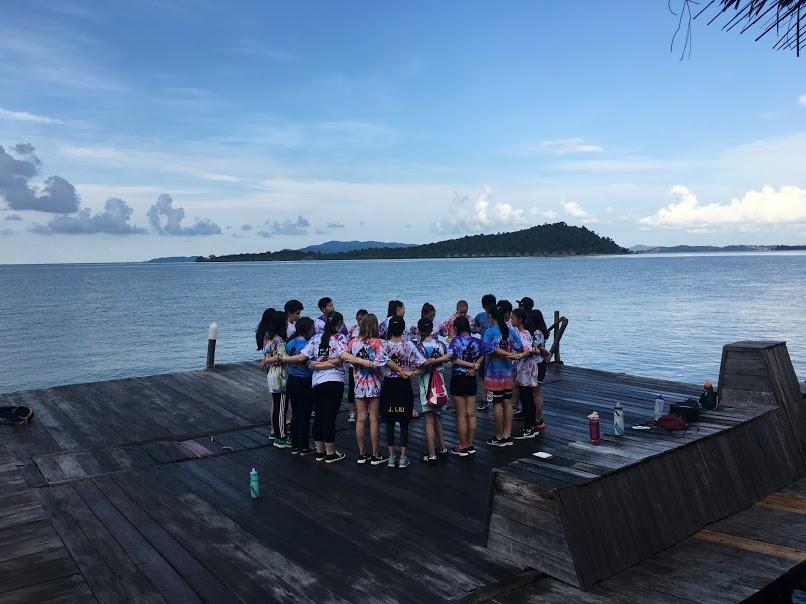
‘Thefourstrands,thoughindividualandrelatedto particularendeavoursandinitiatives,alsocome together,theoneaddingdepthtotheother.’
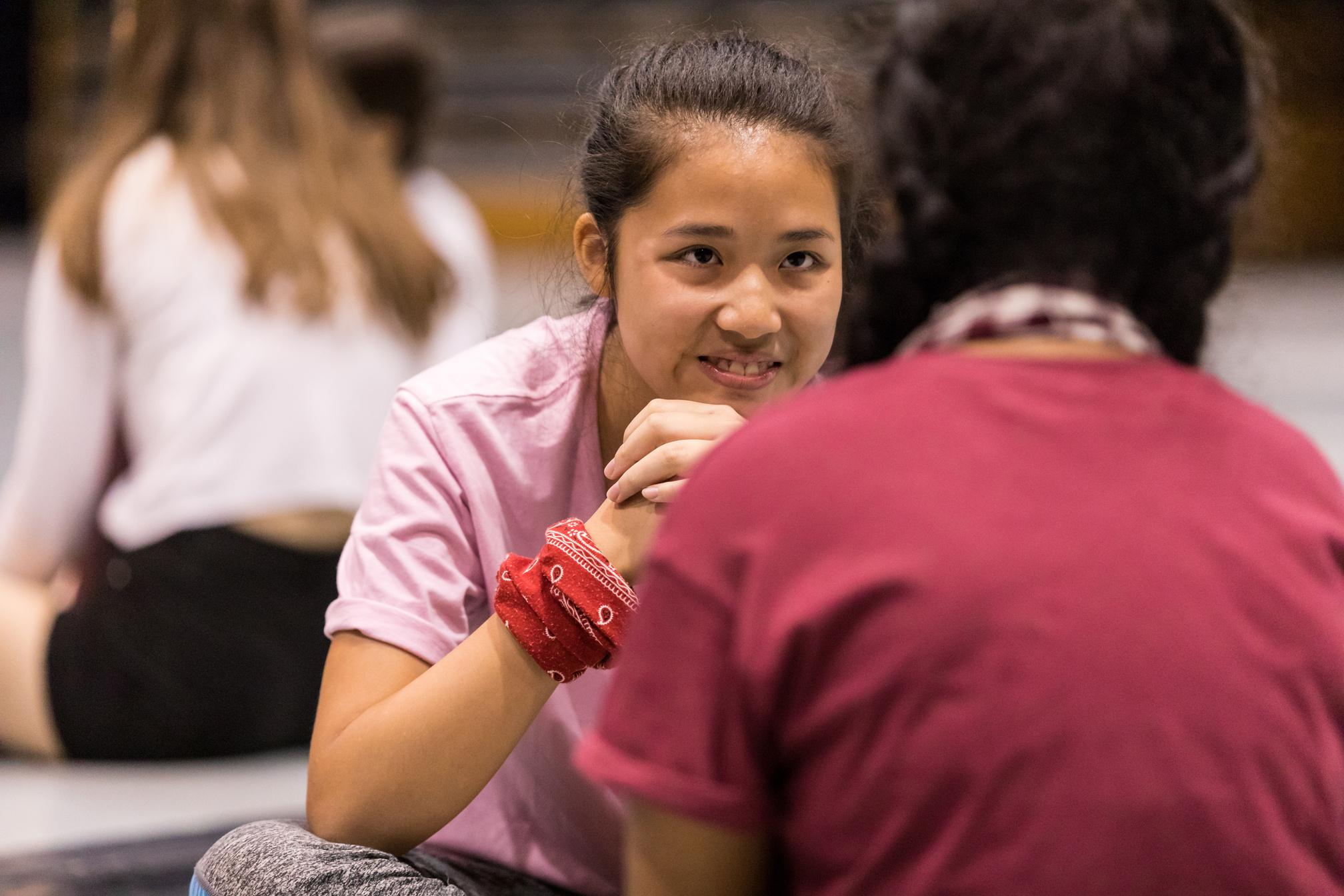
Fundamental to ISTA’s mission is the use of the ISTA™ Ensemble Method to bring people from different places together to collaborate, create communities of learning and celebrate our differences as well as our shared humanity. Using theatre and the related arts, learners also explore the interconnected nature of the world, our communities, ourselves and both the benefits and challenges of this interconnection. Fundamental to these experiences and one of their key features is that learners develop new connections, and friendships and become part of the international creative networks we create. The characteristics of the global learner which ISTA aims to develop, relate not only to learning but also to the learner’s growth and flourishing as human beings and as citizens of the world. The development of the global learner is central to all ISTA’s work and every experience is designed carefully with this in mind.
The four strands, though individual and related to particular endeavours and initiatives, also come together, the one adding depth to the other. They provide focus as well as provide ways to enrich ISTA experiences, ensuring that ISTA brings together theatre, deep learning, and responsible citizenship, making it a leading provider of global learning through theatre and the related arts. ◾

In this section ISTA profiles one of its partners, their work and the nature of the partnership.
ISTA is proud to be partnering with Amala education; an organisation established in 2017 with a bold aim to provide alternative upper secondary education to young refugees and crisisaffected young people aged 16-25 who often face insurmountable obstacles to accessing education. By providing highquality education, Amala wants to enable refugee and conflict-affected youth to improve their own lives, participate in society and drive wider societal change.

Access to education is vital for the full development of human and societal potential; yet for millions of adolescent and young refugees amongst the world’s growing refugee population, education remains a distant dream.
Globally, there are now more than 80 million people who are displaced, and crises are increasingly protracted, leading many people to spend years if not decades in displacement.
Furthermore, ongoing conflicts and the impact of climate change mean that the number of people who are forcibly displaced is predicted to rise to hundreds of millions by 2050.
34%
One-third of refugees are enrolled in secondary education, compared to the global rate of 84 per cent.
Only five percent of refugees reach higher education compared to the thirty-seven percent global higher education access rate.
Amala (formerly known as Sky School) was conceived in 2017 in response to the gap in quality education provision for displaced youth. The name is inspired by the Arabic word for hope, which their education embodies. Amala believes that young refugees - like all people - have a right to quality education. Their mission is to use the power of education to transform the lives of refugees, their communities and the world...
In 2016, Amala co-founders Mia and Polly were working on a prestigious scholarship; the programme admitted refugees to schools around the world to complete their upper secondary education. They found that for every scholarship place available, hundreds of promising applicants were turned away.
Images: Sourced from Amala website www.amalaeducation.org
Their subsequent research showed that there were few educational opportunities available for refugee youth aged 16-25, many of whom are forced to drop out of educational systems due to the barriers they face. The idea for Amala was born: to provide transformational learning programmes for displaced youth and their host communities to improve their lives today and open up opportunities for the future.
Amala has two main programmes: the Amala High School Diploma, the first high school diploma designed for and with refugee youth and the 10-week Changemaker Courses in areas such as Peace-building, Ethical Leadership and Social Entrepreneurship.
Amala supports students to access further opportunities for education, training and work beyond their studies. Amala learning focuses on the development of learner agency as well as competencies that enable learners to make changes in their lives and communities. Amala learning is delivered through a blended learning model and in light of Covid-19, many courses have been adapted to an online model Amala programmes are delivered both directly by Amala and in collaboration with partners whose missions are aligned with their own. Through collaborating with partners they have been able to bring transformational education to
refugees in Africa, the Middle East, Asia, Europe and Latin America.
This programme is the first international high school diploma designed with and for refugee youth. The High School Diploma is an alternative pathway to completing upper secondary education (high school) for youth aged 16-25 who are out of school and who wish to access a holistic opportunity that focuses on the development of competencies to improve their communities and the world. The Amala High School Diploma has been launched in Amman, Jordan and Kakuma, Kenya. This year Amala is launching its third cohort of the programme in Kakuma and the fourth cohort in Amman.
Amala Changemaker Courses enable refugee and crisis-affected youth to develop their sense of agency for positive change in specific areas including “Peacebuilding”, “Social Entrepreneurship” and “Ethical Leadership.” Changemaker Courses develop life skills and can support integration and participation in communities, economies, and societies.
Amala's target demographic is young refugees and crisis-affected youth aged 16 - 25. The Amala High School Diploma is particularly targeted at youth who are unable or not eligible or able to access the national education systems of the countries where they are living due to
language barriers, age limitations or family and work commitments. The programme is free of charge for students. Through the power of education, Amala enables refugee and crisis-affected youth to unleash their potential and improve their lives and communities and to drive systemic change through participation and influence.
85% of Amala short course alumni are enrolled in education six months after finishing an Amala programme including higher education, vocational training, language classes and informal education programmes.
An Amala education not only supports individual growth but also on students developing their capacity to create new value in their communities. 44% of alumni are leading, working or volunteering on entrepreneurial initiatives and social projects six months after graduating.
Some continue to work on social impact projects they have started during their studies, others are volunteering to teach others English and Arabic, while others are contributing to peace-building initiatives in the community.
Increasingly, Amala students and alumni are influencing wider systems on youth and education matters, impacting the lives of many other young people around the world. Alumni are serving as representatives on bodies and forums that inform policy around refugee education, as well as advocating for refugees and disadvantaged youth to access high-quality education, entrepreneurial, and job opportunities. Current students are also taking part in forums to shape global education policy. Read more about Amala’s students and what they have gone on to do after completing an Amala programme here
‘Globally,therearenowmore than80millionpeoplewhoare displaced,andcrisesare increasinglyprotracted,leading manypeopletospendyearsif notdecadesindisplacement.’
ISTA is partnering with Amala to run a two-day workshop with current Amala High School Diploma students and alumni (18-25) in Amala’s Amman centre in Jordan. The workshop, Staging our stories, changing the world, will focus on using the ISTA Ensemble Method as an approach to community building and the staging of personal stories as a form of advocacy and as a catalyst for change.
Working with young refugees and displaced young people is an exciting new departure for ISTA; providing the organisation with the opportunity to develop its work and extend the reach of the ISTA Ensemble Method beyond its current communities. Telling your own story as well as sharing stories across cultures using theatre and the arts is a key feature of ISTA’s global learning methodology and mission.
Engaging young people with the process of selecting, structuring and finding ways of communicating their own individual stories and experiences, though sometimes difficult, is empowering and affirming. Sometimes words alone are not enough Theatre and the arts provide us with many more possibilities to express our experiences and share our stories. The collective sharing of stories has, through the ages, been an effective tool for community building and celebration. In our current times, ISTA believes that stories can also be a tool for intercultural connection, understanding and change.
Listening to and connecting with the stories of others, experiences beyond our own, builds compassion and is an effective advocacy tool.
Together with this workshop, ISTA is also offering this unique professional development and learning experience for educators and artists interested in theatre as a tool for change Working alongside ISTA trainers and Amala facilitators, a three-day training, working with young people, will provide artist-educators with new skills and approaches to apply to their own work both in and beyond their own context.
Through values-led partnerships, ISTA works in collaboration with other organisations that share its mission and philosophy, to bring about change and make the world a better place through global learning.
‘Throughvalues-led partnerships,ISTAworks incollaborationwith otherorganisationsthat shareitsmissionand philosophy,tobring aboutchangeandmake theworldabetterplace throughgloballearning.’
Helen: You are Patron of ISTA and Professor of Creative Education at the University of Warwick. Can you explain what is meant by ‘creative education’?
Jonothan: Before I was Professor of Creative Education at the University of Warwick, I was Professor of Drama and Theatre Education. For a number of reasons we moved into the business school and the move to become Professor of Creative Education broadened out from the theatre and drama work. Theatre and drama still remained, however, very much at its core.
I still take a theatre and drama view of what we mean by ‘creative’ and what we mean by creative education. It's all the things that this issue of Scene is about. It's giving young people of whatever age the means to look at, question, challenge
and reimagine the way the world might be. It’s a way of feeding the imagination, which is the core of creativity. Unless you imagine and have ideas for how things might be, you're not going to make anything that is different or anything that makes a contribution. In the business education context, that's obviously very important. We have young leaders going out there into a world that can't carry on the way it is, whether in business or in any other sphere of life. We urgently need to rethink. We urgently need new ideas to make sure that we protect the planet, that we find a more fair and equal distribution of the resources that we have.

And crucially, this comes from theatre. Theatre develops a high sense of empathic understanding of others and the way that others see the world differently from ourselves. In the context of a business school it's critical that future business leaders are not making decisions that don't take into account the consequences of those decisions on people's lives, whether they're employees or whether they're beneficiaries from the business. It's absolutely essential.
Having your imagination nourished, stimulated and encouraged. Having confidence in it. What does that become? What does that mean? What might that produce that would help make a difference to people's lives or to the world? It's the very broad view of creative education I have. And creative education doesn't belong to the arts. It belongs in all disciplines. It belongs in all walks of life, it belongs in every field.
Helen: In the business world are the benefits of creative education and creative learning happily accepted or do you come across resistance?
It's to do with moving students away from passively receiving knowledge to actively engaging with knowledge, which is what we're able to do through drama and theatre. In drama and theatre, the world is not an abstract. It's not a curriculum on a board. It's something that we experience and live through and take roles in and reimagine. So for all of those reasons, that's why I'm Professor of Creative Education but it's deliberately broad. One of the interesting things about creativity is that it's a very slippery concept. Nobody can define it exactly and say what it is and I think it’s quite useful for it to be slippery in that way. But at its heart is imagining and turning those imaginings into ideas that can be turned into something, whether it's a product, a service or a piece of art.
Jonothan: Yes, I think so. But in universities or schools, the pressures on a curriculum that can be measured easily, that can be consistently applied across every classroom - that is increasingly about acquiring knowledge rather than making knowledge, are huge. So to persuade people, not so much students but other faculty as to why you would spend time doing work which is not that precise or clear in its objectives, that is probably not going to be that precise or clear in how you measure it, can be difficult. But the big major businesses absolutely understand that we can't just carry on as we have done. We do need to find new ways of doing things, new ways of working, new ways of using resources. So in that sense there’s a very open mind about it. The struggle though, is to find curriculum time and navigate the pressures on students, like student loans for example.
Ourdramaand theatreexperiences connectusto peopleinwaysthat areunique.’
If you want to become an accountant you're going to choose an accountancy course. Persuading a student why they might put a creative course into that mix can sometimes be difficult. But it will tend to attract a certain kind of student who's maybe got more of a social responsibility, more of a questioning mind, who may have benefited in the past from a strong arts education.
Many of the students in the business school do come from independent schools, which sadly, tend to have more opportunities than some of our state schools. It's difficult. Drama and theatre are never going to be completely embraced, that's what you buy into when you come into this field. Knowing that you're always likely to be on the margins but that’s the core of everything that we do and everything that we learn. It's always going to be a resistance movement. It's not always going to persuade everyone about its benefits. But that's what we do. That's what we're used to.
Helen: Staying with education, we hear and use the term ‘global learner’ a lot. What is global learning though and how can theatre contribute to it?

Jonothan: I think global learning is that we understand that we are not alone, that we share a planet with others who are from a multitude of different cultures, different backgrounds, different levels of deprivation and prosperity, different ideas about what the future looks like, different ideologies. And you can isolate
yourself from all of that or you can engage with it. One of the powerful ways of engaging with others is through stories because what any story will do is engage you at a feeling level as well as at a thinking level. The importance of theatre and drama is that those stories are not read off the page or listened to in the classroom, they're active, they're made real. So we can feel and think what it might be like to be in a story that's from an entirely different culture. We can think and feel what it might be like to be in a situation of need that's not one that we've actually experienced but is one which we can connect to through empathy and emotion. The core reason for drama and theatre is to show us how we live and how we might live better together. And that's got to be in a global sense. It's got to be for the world rather than just how does that affect me? How does that affect my classroom? How does that affect my friends? It's got to be a broader, more universal view.
Our drama and theatre experiences connect us to people in ways that are unique. They allow us to explore and feel and imagine. That's why as children, we love picture storybooks, why we love to be taken out of ourselves, to be taken out of our immediate environment, to be taken into other lands, to be taken back in history, to look forward to what the future might look like. That's something we know instinctively as children that we need and want to engage with. So drama and theatre is a way of continuing that fascination with a deep desire to know more on a personal human level, not just in terms of facts and figures such as how many people live here and how many people live there and what's the birth/death rate. But what does it actually feel like to be somebody who's in a different place or a different time?
Helen: In this issue of Scene we're talking specifically about how theatre can be used to explore the world. You've touched upon this already but can you talk a little bit more about how theatre, beyond the study of theatre traditions and styles, can impact the world and its potential to bring about real change?
Jonothan: One of the really great things about ISTA is that it encourages students to look at theatre traditions and cultures from across the world.
But underneath all of that there is the western tradition of theatre and that western tradition of theatre, we generally agree, started in fifth century BCE Athens
and was the first invention of democracy. Before the arts, before anything else.
We know from archaeological digs there were small theatres in the communities around Athens before the Acropolis or anything else. It was, from the earliest time, not seen as entertainment but seen as a way of people coming together to see how they live and to think about how they might live better together. There's a political coming together, a political way of being critical of how we are and being critical about how we might change and how we might become different. So I think that’s theatre’s chief role - to nourish and encourage democratic values and a democratic mindset. I think the ‘doing’ of theatre and the watching of theatre does that.
What we've not talked about is the coming together to make theatre and the
‘Havingyour imagination nourished,stimulated andencouraged. Havingconfidencein it.Whatdoesthat become?Whatdoes thatmean?What mightthatproduce thatwouldhelpmake adifferencetopeople's livesortotheworld?’
creation of ensemble, which is an essentially democratic process It's about people coming together, it's about putting the common interest above one's self interest. And all of these things, young people learn through becoming a theatre ensemble. To be themselves but be themselves mindful of others and to be themselves working towards some common good which only a group of people can achieve together. And that sums up what democracy is. So any coming together of young people to form an ensemble to make a piece of work together is essentially a politically democratic process. In helping young people to become dramatic actors, we're also helping them to become effective social actors, gaining confidence, losing your selfconsciousness, finding your voice
These are not just restricted to the drama studio or the theatre. It's about taking that out into the world and looking at how you can be an activist in the world, looking at how you can use your skills to support other movements, other ideas of the group, other projects that will better the environment, better people's lives, better the world. So that's what really makes it different from any other art form, I think,

‘Beingpartofthat process,ofensemble building,isformea coredemocratic processwhichis absolutelyvitaland increasinglyneeded.‘
because it uses human beings in space and time to tell its stories.
Being part of that process, of ensemble building, is for me a core democratic process which is absolutely vital and increasingly needed And at the heart of that is empathy.
Not sympathy, not giving everybody a hug but empathy - understanding that people have different points of view which you may not agree with but you must work with and understand In that commitment we minimise the weaknesses and maximise the strengths of who we are. We recognise that some of us are better at this than they are there and vice versa. And instead of criticising and complaining we will work together as a team When we come forward as an ensemble there's not a sense of weaker or stronger players. There’s a sense that this is a strong ensemble that has all the skills, all the aptitudes, all the capabilities that it needsthat's what makes it successful People have worked through those difficult interpersonal relationships and interpersonal differences in order to achieve strength together. We become the fist, the fist of change.
Helen: You mentioned ISTA there and talked about the power of the ensemble. Can you expand on what role ISTA plays in exploring the world through theatre?
Jonothan: I think it's becoming essential I think it's really important that ISTA’s broadening its appeal, welcoming a wider community of teachers and young people. It’s important because the world in which
we live, in many countries, drama and theatre, particularly in education, are not as strong as they might once have been. But everywhere there are pockets of people who understand. They may feel largely unsupported now because they might not have a national or even international association anymore. And ISTA has an offering to fill that gap because it's strong and it's stable and it's got a clear sense of what its future should be. So I think it's really important to become the international voice of a particular model of drama and theatre education, which is absolutely rooted in the ensemble but also absolutely rooted in internationalism. One thing that ISTA offers which is very difficult for teachers outside of the independent sector, is to get that knowledge and understanding of other theatre forms, that knowledge and understanding of other theatre forms, that knowledge and understanding of how you build and make Ensemble. Once we get back to festivals and live work and we grow that locally and nationally, as well as internationally, we're offering students a unique opportunity to come together with people who are from different places, from different backgrounds, to work together again, democratically To understand and be enriched by having been with people who are different or see the world differently or have different abilities. I think there's an exciting opportunity for us to gather together theatre and drama educators who may be feeling a bit isolated now and to give them a strong voice and to give them guidance and to give them help and to give them support. ◾
I grew up at the end of the Cold War in the US, meaning I grew up with only what I was told about the USSR. In the mid1990s, I was on a night train from Kyiv to Donetsk. I met a charming couple, Oleg and Masha. We stayed up all night, playing cards and drinking tea. It was my own first personal ‘glasnost’ as the pictures they painted of their lives growing up in Ukraine were vastly different from the ideas I had adopted. I needed to hear their story and their truth to begin to understand a life different from mine. Looking back, I can see how that was my first experience into the beginning stages of Verbatim Theatre.
WithintwentyminutesIwas transformedinaroomof strangersaswecollected storiesfromeachotherand builtmeaningfultheatrebased uponeachother’struths.
My journey into Verbatim or Documentary Theatre started with the role of spectator. I was captivated by Anna Deveare Smith’s Fires in the Mirror and Little Revolution by Alecky Blythe. Some years later during an ISTA Connect Festival, I met Dinos

Aristidou and was intrigued by what could be done with students and verbatim. Dinos taught a workshop for teachers using his ‘Reflection Pack’. Within twenty minutes I was transformed in a room of strangers as we collected stories from each other and built meaningful theatre based upon each other’s truths.
Skip ahead a few more years as I kept rethinking and reinventing how to be a better guide to a new generation of theatre makers in a post pandemic world. I had taken another workshop with Dinos specific to the ‘Hear Us Out’” Verbatim method. (This was highlighted in ISTA’s 2021 global production, Diary of an Extraordinary Year). After this workshop, I knew this was an experience that I wanted to give my students.
I applied for and received a grant, coordinated with ISTA and decided that my MYP Drama 5 class was ideal as it would set them up for IBDP and allow them time to create, collaborate and process. What did I actually want my students to accomplish? I wanted to introduce them to a new way of creating theatre that would allow them to engage in the world around them with a different perspective.

The overall concept for our project/production was 9/11. 2021 was the 20 year anniversary of September 11 and this event was something that this group of students could all access stories about from people they knew.
My students prioritised the concept of INTENTION of dignity and respect. This included that they were sure to get written permission from the storytellers.
In October of 2021 my students began their online workshop. Dinos Aristidou guided my students through the process of creating Verbatim Theatre This process was beautifully scaffolded. One of their favourite starting points was an exercise that involved students working with partners. They were to choose a special picture from their phone and tell the story. Dinos guided them through the ideas of story collecting versus merely conducting interviews
Below: Photo from the production‘NowthatIhave manyofthese samestudents asGrade11s,I seethegrowth theyhavemade asperformers, designersand overall,growth ashumans.’
and to work through the prompts of open ended statements rather than questions.
Dinos worked the students through creating prompts so they could begin to collect their stories. We settled on six prompts. The fairest way to assign prompts for story collecting was just to draw from a hat.
Once we had prompts and a loose plan, every student chose 2 people to talk to and get their 9/11 story. To prepare students for this experience I provided basic dramaturgy into September 11, 2001. We watched old newscasts together and I laid out original newspapers and magazines from that week, gallery style, for students to be able to read. We gained the appropriate permissions from the storytellers and then practised focused listening without judgement and showing respect.
The students had a week to record their stories. We listened to every single recording in class as a group with students taking notes. Personally, this was my favourite part. We discussed every story one at a time.
My theatre makers came up with ideas for imagery specially tailored to performance and production. They were also able to make connections that were not always obvious, such as ways to overlap stories and add characters that were mentioned while retaining full integrity of the storyteller’s truth by not changing any of the original wording.
The interviewers transcribed all the interviews and were instructed to find a 1 to 2 minute cut that they found the most poignant The students chose to memorise the written transcripts and not use the headphones, as we would be performing live and in an intimate space.
Once I had all the monologues I randomly assigned a student to work with a piece that was not their own. Students worked in groups according to their given prompts.
This production was almost entirely student designed. I served mostly as a consultant. Some stories were straight out monologues, some stories were combined to create dialogue or a round-robin type story. Students chose staging, physical blocking, costumes, lighting and sound. By the time of the opening this ensemble had created a stunning and poignant piece of theatre.
We started with a small audience in order to get some feedback. This was written feedback (Google Forms). We went through the notes and the students made adjustments to be more clear. Most of theadjustments had to do with timing and spacing, making sure to take pauses and
Iseethegrowth theyhavemade asperformers.
keeping with transition music. The transition soundtrack focused on 90s music including ‘Carry On’ by Fun. It was unanimous and almost unspoken that this would be the title of the piece, Carry On.
The intention of this ensemble was to remind their audience of the daily humanity behind a life altering event that went beyond what the news reported. Their intent was quietly powerful and effective. This was evident on the day of the show, as many of the storytellers came, as well as audience members who were of the age to have their own firsthand memories of 9/11. There were many tears and the audience lingered for a long time after the house lights came on to talk to the actors, to talk to each other. To talk and to listen. For after all, that is the point.
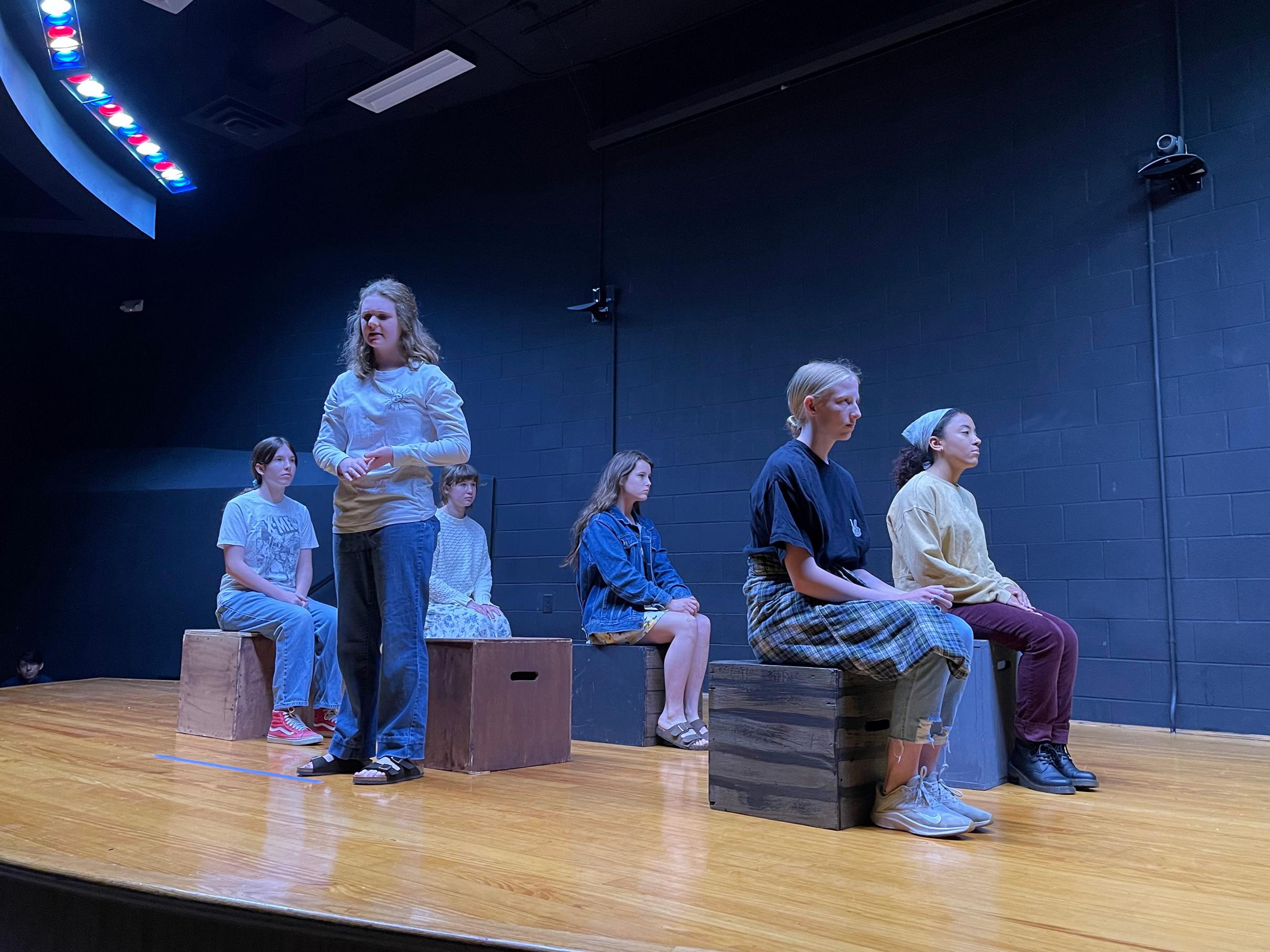
This particular project finished in May of 2022. This entire process took place on and off over a year and honestly off and on, as we worked through different production pieces and units. I didn’t plan it to last from August to May but looking back, I think a year is a perfect time to work on a piece. One packs for a long trip by taking breaks and not all at once or one tends to forget things; much in the same way, we took breaks from this production to work on other things, including a one act play and other curriculum. Having the breaks from the piece and being able to come back to it heightened the students’ own process of evolving through the work.
I still have the students who were a part of the production and they’re still talking. I also use the Reflection Packs with all levels of theatre students and discussions around those have shown me where some students would like to continue practising Verbatim Theatre. This is one student’s answer to the post production reflection, to the question: ‘What would you like to work on should we do another Verbatim project?’ ‘Possibly a reverse generation piece. Have older people recall their teen years and current teenagers responding to prompts about their “now”.’ In spite of the digital age, both groups would definitely find similarities and it might help parents/teachers/coaches etc understand more about what is happening internally with teenagers during this time.
I’m an American Theatre teacher who was fortunate enough to teach overseas for a few years. Now I’m back in America working with only American students.
Short of being able to put them on a plane and take them out in the world, I find great satisfaction in being able to guide students through World Theatre practices.
Now that I have many of these same students as Grade 11s, I see the growth they have made as performers, designers and overall, growth as humans. ◾
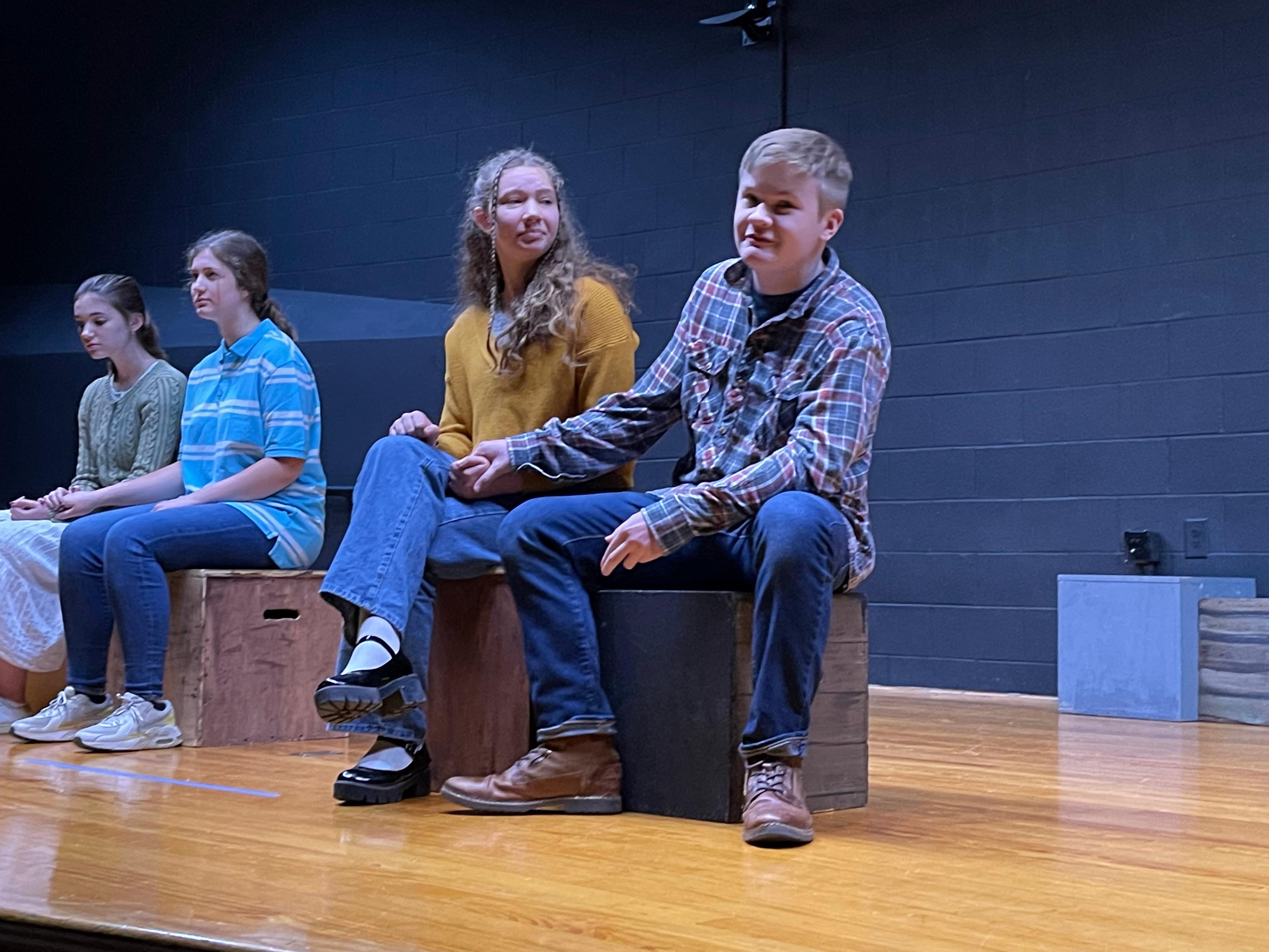
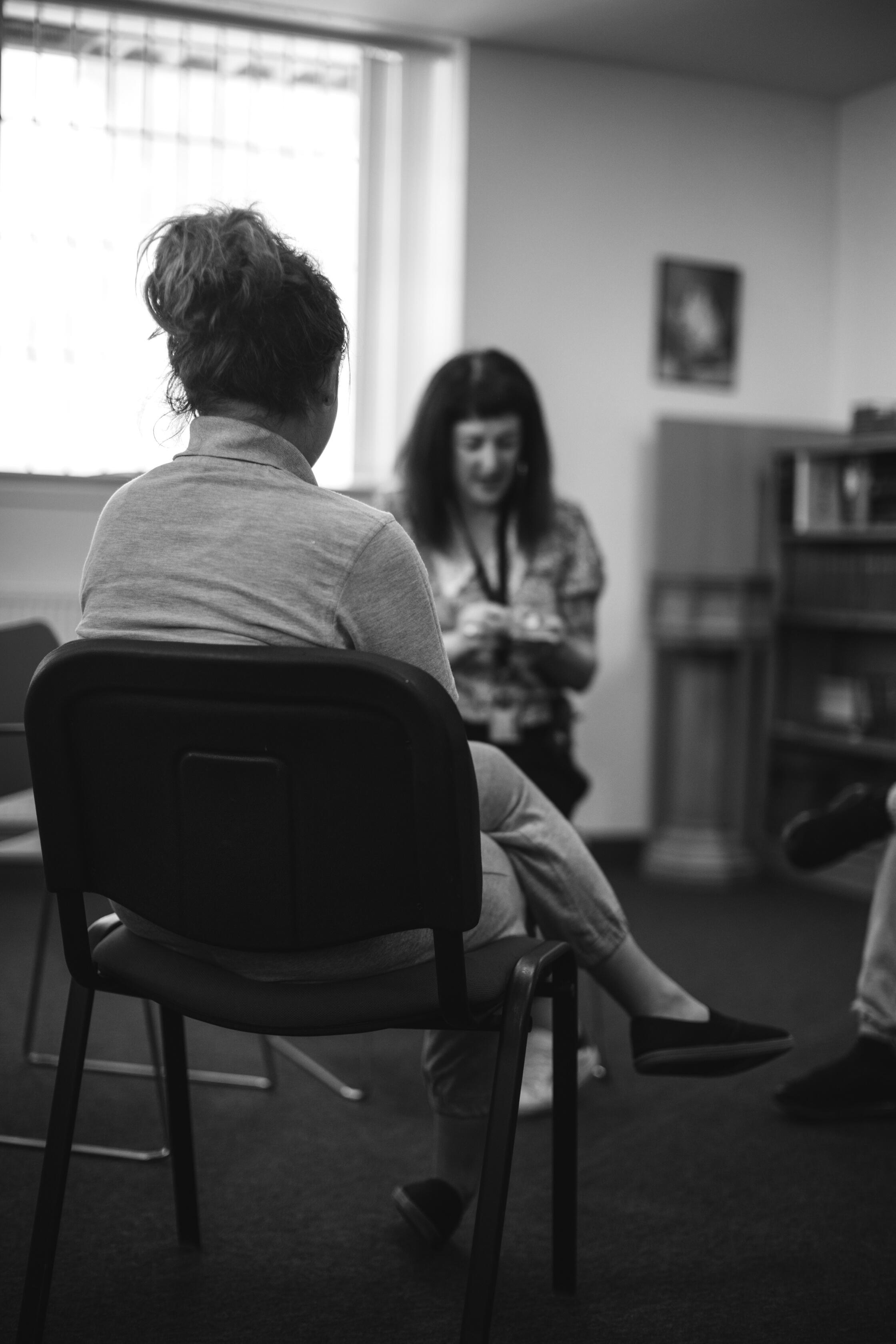 BY JESS THORPE
BY JESS THORPE
For the last twenty years I have introduced myself as a theatre maker. In much of my previous writing about my practice I have talked about the value of live experiences and the importance for human beings to be in the room together in order to create connection and make meaning. But what if you can’t? What if the tools you have always used just don’t work anymore? Is it possible to work in a new way?
Alongside making performance work within a mainstream theatre context, for the last fifteen years I have also had a research practice into the arts in criminal justice. During this time I have worked in ten of Scotland’s prisons (there are fifteen in total) as well as in prisons across the UK and the USA I have led projects lasting from one day to seven years in length and have worked in female, male and young people’s estates.
In 2019 my own company Glass Performance set up the first ever youth theatre in a prison based HMP YOI Polmont which is Scotland’s national facility for young men in custody.
The project was soon thriving and we had a waiting list of young people waiting to join. Then in March 2020 Covid19 hit and everything came to halt. The young men in our group were locked in their cells for twenty three hours a day with no activities, no visits and no sense of what would happen next

As an arts organisation we were mid-funding cycle. We had the financial resources in place and we had the time. We also felt we had an ethical and social responsibility not to abandon our connection with the young people in Polmont during this time, many of whom are among the most vulnerable and traumatised in Scotland.
Theatre was not going to work anymore but was there something else that could? How else might we use our skills to engage with the community behind the wall?

‘Iwasnolonger the‘expert’in theform–itwas somethingwe werefiguring outtogether andthe possibilities wereendless.’
In April 2020 the delivery team for Glass Performance, which was comprised of Louise Allan, Ricky Williamson and Gudrun Soley Sigurdottir with support from Tashi Gore set about developing a brand new project called The Jukebox. This took the form of a radio show which Gudrun and Ricky (and later Jack Tully) produced at home using the editing software Garage Band. They wrote to all the young people who had previously engaged with Polmont Youth Theatre using emailaprisoner com, a service that enables families and communities to send emails to contacts in prison (for a small fee). They collected song requests and ideas for sections of the show and each week they sent a two hour radio to the Media Centre Officer, Willie Mulholland who made sure it was played three times a day.
The project grew as more and more young people subscribed to receive emails and be part of creating the show. At the time of writing this article the group meets inside the prison each week and the show is produced by over thirty five young people who write and present the content and choose all the songs themselves. The show has won several Koestler Awards and a section ‘Time Piece’ was featured in the overall exhibition at the Southbank Centre in London in 2021 and has since been shared with a wider public audience
In August 2020 I was visiting Polmont to check on The Jukebox and Willie Mullholland relayed some feedback the project had received from a group of women also housed at the prison He told me: ‘They listen to the Jukebox every week but they say it’s not for them. They are wondering why can’t they have a show for women?’ It was a clear provocation. A call to action.
So in September 2020 I seconded myself in my role as lecturer in Arts in Justice at the Royal Conservatoire of Scotland to the task of creating a radio show for women. I was incredibly grateful to be joined at this time by Gudrun Schmidinger who was a third year BA student of the Contemporary Performance Practice programme at the RCS and had chosen to come on placement with the project. She took on the task of editing the show. Together we created ‘Women Talk’ and using the same process piloted by the Juke Box we began emailing women inside the prison in order to generate content for a fortnightly radio show.
In the beginning I found the prospect of making radio incredibly daunting. I had no idea how to work in this way and had not yet met the population of women who we were trying to engage. And yet in those initial weeks sitting in my bedroom staring at a blank computer screen I was reminded of a quote I had once read in an interview with the visual artist Judy Chicago. She was being asked about the tools she used to create her feminist art works and whether there was a specific one (drawing, painting, needlework etc) that she preferred to use. Her reflection was this:
‘For me it’s a content based pedagogical method: find your content and then best select the media which best expresses this content. Then if you need to develop the skills to mistress that medium. It is the content that motivates.’
www.cassoneart.com (August 2011)
This idea really resonated with me and it helped me to see that I had to be motivated by the situation in Polmont and the current need and not the limitations of my previous approach. My reasons for facilitating the arts in prisons were the same as they had always been - to provide human connection and creativity in spaces with increased isolation and deprivation of experience. But due to the pandemic the tools I would need to use to do this work had changed. I would now have to ‘mistress a new medium’ in order to best serve the challenges of the context and I would need to revise my thinking about the approach to my practice.
The first few episodes we created were tentative. They involved me talking about anything and everything that I found interesting and hoped that others might too. This included long extended sections on the inauguration of Kamala Harris and a huge exposition about Amelia Earhart, the first female aviator to fly solo across the Atlantic. Looking back at these episodes makes me laugh at myself and also cringe a little. At best these attempts were clunky and at worst self-indulgent –but it was a start Soon more women started signing up to receive emails and began to send in song requests and things began to get easier. We experimented with new styles of presentation, created shorter snappy sections and invited different guests to talk on the show A quick poll of the women’s residential hall told us that around 70% of the population were listening to each show and so we continued. By August 2021 we had created 18 episodes.
In September 2021 we secured funding from Inspiring Scotland and were able to move the project into the prison. Artists Mona Keeling and Indra Wilson came on board to lead the weekly sessions based in the Media Centre and I stepped into the role of researcher. A group of twelve women came to meet us every week and took on the task of making the show themselves. As they grew in confidence and our relationship developed they began to tell me about their previous experiences of listening to the show I had made from my bedroom. They told me how boring they found some of it and the point that they felt it had started to get better.
How occasionally I had made them laugh and sometimes they had switched it off because they had had enough of my voice. They said they felt they had gotten to know me a little bit more with each episode and had enjoyed it when I shared things about my own life. They said they liked the music the best and it had been important to them when we had played their song requests and given shout outs to the people they loved.
In turn I shared with them my fear at not knowing how to make radio and how it had been an exploration in working in a new way. I confessed to my relief that they had now taken over the project and my feeling that the show was now much better. In many ways this felt like more of a level playing field. I was no longer the ‘expert’ in the form – it was something we were figuring out together and the possibilities
As I look back on the many things that this project has taught me, I realise that I no longer want to introduce myself solely as a theatre maker. Live performance will probably always be my first love but I now know that is not the only way to make real meaning with others. The inability to use my tried and tested tools in a moment where I really wanted to communicate has helped me to understand that the ‘why’ of my work should come before the ‘what’ I’m going to do and the ‘how’ I’m going to do it. Going forward I feel that I want always to be open to mistress a set of new skills and find alternative solutions as I try to make a genuine connection with others through the Arts. ◾


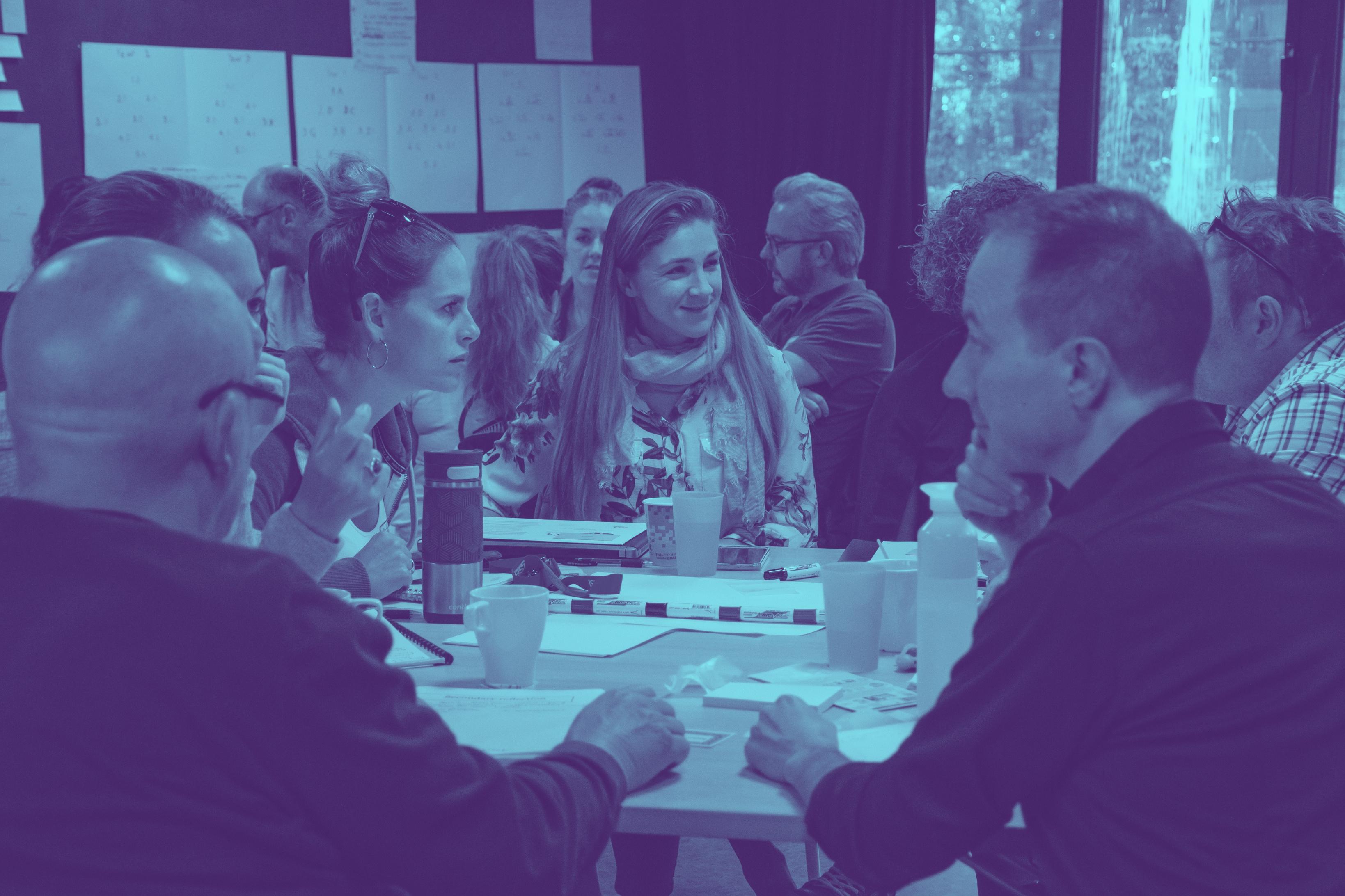

 BY SOFIA MARTYN
BY SOFIA MARTYN
The term ‘wellbeing’ has gained prominence in our lives recently yet it is a broad concept that struggles to be defined. It is often used synonymously with mental health which may mislead people or stigmatise the concept Furthermore, wellbeing has many related concepts which are sometimes used interchangeably, such as: emotional intelligence, flow, growth mindset, happiness, mindfulness, positive psychology and wellness to mention a few. This discussion will explore the context of wellbeing from a socioemotional perspective and identify some of the ways
that theatre education contributes to the wellbeing of students.
The origins of wellbeing can be traced back to the Nicomachean Ethics where Aristotle referred to the notion of Eudaimonia; a Greek term that is often translated to signify ‘happiness’. Aristotle believed that eudaimonia was the ultimate goal in life or the summum bonum, as it was known in Latin. It could not be realised through fortuna or chance but through a conscious effort to live a successful life.
1 Debbie Watson, Carl Emery, and Phillip Bayliss Children’s Social and Emotional Wellbeing in Schools a Critical Perspective (Bristol Policy, 2012), 2 2 Aristotle, Jonathan Barnes, and Anthony Kenny Aristotle’s Ethics : Writings from the Complete Works (Princeton; Oxford: Princeton University Press, 2014), 17.Scholar, such as Otfried Höffe, Jonathan Barnes and Anthony Kenny have argued that eudaimonia does not translate as happiness but rather as ‘living or doing well. In fact, modern psychologists such as Dr Ilona Boniwell, contend that contemporary literature on the approaches to wellbeing ignore contributions from the humanistic and existential thinker, such as Maslow, Rogers, Jung and Allport and fail to consider the complexity of the ancient philosophical notions of happiness. Boniwell also highlights that there are two conceptions to happiness: Hedonic and Eudaimonic.
Emotional Intelligence and Positive Psychology; which have combined scientific and psychological research to propound the idea that individuals can learn how to a live happier and more fulfilling life.
In his book Flow, Csikszentmihalyi suggested that a person could achieve a state of ‘flow’ when they made a conscious effort to pursue something that they found difficult but worthwhile. He believed that ‘the best moments usually occur when a person’s body or mind is stretched to its limits in a voluntary effort’ and that ‘optimal
Hedonic happiness refers to pleasurable moments or having a good time whereas Eudaimonic happiness refers to striving to achieve a goal or overcome a challenge either for personal growth or for the good of others.
Since the 1990s psychologists such as Mihaly Csikszentmihalyi (1990), Daniel Goleman (1995) and Martin Seligman (2000) have published their theories on Flow,
4 Höffe Aristotle’s “Nicomachean Ethics ” , 35
experience is ... something we make happen.’
In Goleman’s book Emotional Intelligence, he believed that if people developed an understanding of their emotions and those of others, they could learn to regulate them.
Through self-awareness, self-management, social awareness and relationship management, Goleman believed that people could develop skills such as self control, zeal, empathy, persistence and self
5 Aristotle, Jonathan Barnes, and Anthony Kenny Aristotle’s Ethics : Writings from the Complete Works (Princeton; Oxford: Princeton University Press, 2014), 17
6 Ilona Boniwell Positive Psychology in a Nutshell : The Science of Happiness (Maidenhead, Berkshire: Open University Press, 2012), 49
7 Ilona Boniwell 2 Types of Happiness: Hedonic and Eudaimonic Well-Being PositivePsychology org uk, (2017),
http://positivepsychology org uk/happiness-hedonic-eudaimonic/
8 Mihaly Csikszentmihalyi Flow: The Psychology of Optimal Experience (New York: Harper and Row, 1990), 3
‘apersoncouldachieveastateof'flow'whenthey madeaconciousefforttopursuesomethingthat theyfoundtobedifficultbutworthwhile.’
EmotionalIntelligence skillsplayakeyrolein theatreasstudents developanawarenessof themselvesandothers.

motivation, which would help them excel in their personal and professional lives.
In the year 2000, Seligman formalised the concept of positive psychology In his book, Authentic Happiness he proposed that people could be trained into living more positively if they learned to focus on ‘happiness, wellbeing, exceptionalism, strengths and flourishing’. All of these theories have gone on to influence the ‘positive education’ movement of the last twenty years which has impacted schools across the world. In the last decade or so schools have introduced wellbeing initiatives aimed at improving student happiness and increasing academic attainment.
Many of the values that psychologists suggest lead to a more fulfilling life are embedded in a well taught theatre programme, not to mention the benefits that extracurricular productions also promote. Surely many teachers can recall seeing students ‘in their flow’, buzzing with energy, elated with eudaimonic happiness after a performance or assessment Moreover, many will have encountered moments where their students have needed support to resolve an argument, bounce back after a failure or adopt a eudaimonic approach in order to meet deadlines.
To explore social emotional wellbeing from an IB DP Theatre perspective, a group of previous students were asked to recount why
they chose to study DP Theatre. It was surprising that their responses aligned more to a desire or priority for wellbeing, rather than for academic achievement. They cited: collaboration, autonomy over what to study, freedom of expression and freedom of creativity as the main reasons for their choice.
So, how does theatre contribute to wellbeing?
Drama and theatre have a longstanding tradition of teaching and upholding social values In western culture, theatre’s social function can be attributed to the Athenian tragedies from the 5th Century BCE.
9
Professor Jonathan Neelands references the philosopher Castoriadis to explain that tragedy served to reveal to the polis both the limitations and possibilities; ‘to show the world as changeable, but also to show through the concept of ‘hubris’ the limits of personal and collective action when these overstep or
9. Jonothan Neelands, “The Art of Togetherness: Reflections on Some Essential Artistic and Pedagogic Qualities of Drama Curricula,” NJ 33, no. 1 (2009), 14, https://doi.org/10.1080/14452294.2009.12089351.
‘Dramaandtheatre havealongstanding traditionofteaching andupholdingsocial values.’
ignore the principles of democratic life.’ Neelands goes on to suggest that ensemble work has a transformative power both personally and socially, quoting John McGrath who said:
knowledge together as relative equals.’
The theatre space is an environment where democracy and education come together. In Philip Taylor’s book The Drama Classroom he wrote: ‘Drama is a collaborative group artform where people transform, act, and reflect upon the human condition.’ As students engage their creative and critical thinking skills, the theatre lesson provides a forum to respond to what they discover. In IB assessments, students are constantly articulating their ideas from their initial intentions, developmental process to the post performance talkbacks. A dialogue is constantly present where the students depend on the teacher and peer feedback in order to improve.
The connection between democracy and education can be traced back over one hundred years to the writings of John Dewey. Neil Hopkins writes that Dewey envisioned the classroom as a shared enterprise ‘where people discovered and constructed
Emotional Intelligence skills play a key role in theatre as students develop an awareness of themselves and others. Peter J. Orange remarked that in researching and theatricalising an issue they examine and reflect both objectively and subjectively in an attempt to make sense of something that would otherwise be alien to them. Through practical explorations, students can step outside of their own world to explore the diversity that exists in other worlds. As Patsy Koch Johns explains:
10. Jonothan Neelands, “Acting Together: Ensemble as a Democratic Process in Art and Life,” Research in Drama Education: The Journal of Applied Theatre and Performance 14, no. 2 (2009),185, https://doi.org/10.1080/13569780902868713.
11. John McGrath. “Theatre and Democracy.” New Theatre Quarterly 18, no. 2 (2002), 133. https://doi.org/10.1017/s0266464x02000222.
12. Neil Hopkins, “Dewey, Democracy and Education, and the School Curriculum,” Education 3-13 46, no. 4 (2018), 434, https://doi.org/10.1080/03004279.2018.1445477.
13. Philip Taylor, Drama in Practice: Action, Reflection, Transformation (London: RoutledgeFalmer, 2000), 1.
14. Peter J. Orange, “Educating International School Students for Global Citizenship through Theatre Arts Literacy” (dissertation, University of Surrey, 1994)
‘One of the great services theatre can perform for the people of any country or region or town or village is to be the instrument of authentic democracy, or at the very least to push the community as near to authentic democracy as has yet been achieved.’

‘Theatre[…]givesus anopportunityto mindtravel,and then[…]become betterhuman beings,more responsiblehuman beingsbecause we’reresponsible, notjusttoourlittle microcosmbuttothe wholeentireworld.’ PatsyKochJohns
When we imagine and try to comprehend the complexities of life, human behaviour and reason, we learn to empathise with others. Goleman asserts that ‘empathy is the ability to feel another person’s emotional state; it is not to be confused with sympathy which is just the ability to put yourself in another person’s shoes without a sharing of feelings.’ Empathy is a collective experience. Therefore, when students work together to contemplate issues and situations that are relevant to them, they pose questions, examine multiple perspectives and challenge orthodoxes. However, it can be a sensitive process that leaves them feeling vulnerable to their emotions and preconceptions. In Ian Morris’ book: Teaching happiness and well-being in schools: Learning to ride elephants, he reminds us that: ‘emotions are not facts rather they are reactions to our perception of the world ’ Students need to acknowledge and manage their emotions and be given time to pause and reflect.
Sometimes it is necessary to diverge from a lesson plan to allow for moments of contemplation or discussion in order to reach a collective consciousness. ‘Teachable moments’ are not planned but when they occur they allow us to embed
wellbeing into our lessons and focus on broader skills such as mindfulness and reflection. Morris advocates that:
‘Reflection leads to the skill of metacognition: thinking about thinking. Many of the advances that a person makes in their life come from reflecting on who they are and how they can change that for the better in light of learning something about how humans function.’
Dewey’s notion of reflective thinking was to suspend judgement and inquire further before making a conclusion. In his book, How We Think, he wrote:
‘To turn the thing over in mind, to reflect, means to hunt for additional evidence, for new data, that will develop the suggestion, and will either, as we say, bear it out or else make obvious its absurdity and irrelevance.’
Reflection is about exploring and testing our past and present beliefs and knowledge in order to forge our way forward. It is an attribute of the IB Learner Profile that encourages students to ‘give thoughtful consideration to their own learning and experience; to assess and understand
their strengths and limitations in order to support their learning and personal development’. Furthermore, reflection is a key component of the IB syllabus and it is formally assessed in each of the written assessments. Students are required to explain the impact that projects have had upon them, how they have shaped their responses to the work and evaluate their outcomes Reflection enables students to analyse their work objectively and subjectively before, during and after their projects in order to celebrate their accomplishments along with considering opportunities for improvement and growth. If teachers encourage them to be constructive in their criticism they take their best lessons forward.
It is with both previous experience and learned experience that students create some of their best work. Sir Ken Robinson wrote in the introduction to his book, Out of our Minds that ‘human intelligence is profoundly and uniquely creative. We live in a world that’s shaped by the ideas, beliefs and values of human imagination and culture.’ Robinson believed that there were three ideas related to creativity: imagination, creativity and innovation. When students conceive an idea, they engage their imaginations; through practical explorations they experiment to develop those ideas further and when innovate they apply new ideas. Theatre has a discursive power, according to Moisés Kaufman
because each element of the stage has its own way of communicating. When students are creating original work they draw on their imaginations to form narratives. They are conscious that meaning can be interpreted through the scenic and technical aspects such as costume, props, set, lighting and sound. Typically students have a heightened awareness that the way they use their face, voice, body, movement and gesture can convey meaning for the audience, they can become immersed in a state of flow as they consciously strive to realise their creative potential. In doing so students take steps towards fulfilling their creative potential as individuals. As Jonathan Neelands articulated in his speech, In the Hands of Living People:
‘We recognise that these students do not come to us as ”human beings” but rather as ”human becomings” - we believe that what we do is planned to help them in this journey of becoming. We try, by all manner of means, deriving from art and deriving from other sources, to put living reality into the hands of living people. The curriculum is the necessary map, it is not the journey itself.’
So perhaps we, as passionate theatre educators, can stock up on our provisions of wellbeing and accompany them on their way.
21 Ken Robinson, Out of Our Minds: Learning to Be Creative (Chichester, West Sussex: Capstone, 2001), xvi
22 Robinson, Out of Our Minds: Learning to Be Creative, 2
23. Moisés Kaufman et al., Moment Work: Tectonic Theater Project's Process of Devising Theater (New York: Vintage Books, 2018) 61.
24. “In the Hands of Living People - Theatroedu.gr,” accessed August 3, 2021, http://www theatroedu gr/portals/38/main/images/stories/files/Magazine/EandT e-mag
Here we spotlight and celebrate ISTA artist Megan Campisi’s Fulbright Specialist work with the Tatbikat Sahnesi company in Turkey. Megan discusses making art in challenging environments.
In a museum in Ankara sits a three thousand year old stone tablet guaranteeing a bride her ssets in case of divorce. In 2019
I travelled to Turkey through a USA Fulbright Specialist Award to give master classes in Lecoq based Tragic Chorus and Neutral Mask at Tatbikat Sahnesi, an independent theatre. My job was to offer tools for expression in a country where women’s rights are increasingly circumscribed, censorship in the arts is

'Weassume progress moves forward, butdoesit?'
routine, and creating theatre has become a precarious occupation
Standing in the museum staring at a millenia old prenup, my host from Tatbikat smiled wryly at me: ‘We assume progress moves forward, but does it?’
These days, many international artists and teachers are confronting challenging environments in which to explore theatre. As an American who started devising Lecoq based theatrein the USA and France, I took for granted my privilege to voice my social political beliefs however I chose, engaging openly with feminism, racism and ageism. But in 2012 I travelled to Shanghai to develop my play, The Subtle Body, with both Chinese and American actors through a TCG Global Connections grant. The project introduced me to a very different art making environment in which the choices we made had potentially serious consequences for my Chinese colleagues. When I was awarded a Fulbright to give master classes in Turkey, I knew I’d need to apply the lessons I’d learned in China. Full disclosure: I have no definitive answers as to how to safely make art in challenging contexts but below I’ll share how the Turkish company Tatbikat Sahnesi and I chose to collaborate in our time together.
company that performs in repertory as well as an actor training programme The theatre is committed to artistic exchange and creating art from a ‘free, positive, creative, enlightened and critical viewpoint’. Many of their plays are directed by the female co-founder, Elvin Besikçioglu and the productions are inventive, dynamic and highly physical. For example, Gogol’s Diary of a Madman (starring Besikçioglu’s husband and Tatbikat co-founder, Erdal Besikçioglu, a highly celebrated actor in Turkey) is performed entirely
First a little context Tatbikat Sahnesi is an independent theatre created in 2013 in Ankara. It has a resident acting
from the platform of a boom lift that Besikçioglu operates while acting, often moving himself directly into clown inspired face to face interactions with audience members. The production has been running weekly to sold out audiences since Tatbikat’s inception.
My master classes were intended to introduce the company actors and
"Therearethree masks:theone wethinkweare, theonewe reallyareand theonewehave incommon."
JacquesLecoq

I like to describe the Tragic Chorus as a group of individual ‘I’s that have become a ‘we’. This happens in real life: protesters, fans, revolutionaries, mobs. It sometimes helps to think of the chorus like a symphony orchestra: members each have their individual qualities, strengths and roles yet the collective is joined in a common purpose that transcends the individual. Sometimes they play together, matching pitch and tempo. Sometimes they contrast, enriching and complicating the whole (What the chorus is not: toga bedecked people droning on in unison!)
I began our work with Neutral Mask instruction, the physical training for Tragic Chorus (I taught in English and French with the help of two amazing bilingual company members who took turns translating and participating). Lecoq Neutral Mask is a very counterintuitive practice; Neutral Masks are not used in performance. Rather, they train actors how to perform without a mask. The absence of facial cues when wearing the mask (the expression of which is intended to approach ‘neutral’, expressing a calm, balanced curiosity) allows actors to focus on the stories intentional and unintentional their bodies tell. And our bodies tell stories hard won stories based on our life experiences (think: wrinkles, tight shoulders, an open smile). These are deeply important elements of our identity but in Neutral Mask we endeavour to get beneath these individual traits to find, as Jacques
Lecoq described: ‘a blank page on which any drama can be written’
Jacques Lecoq also said: ‘There are three masks: the one we think we are, the one we really are and the one we have in common’. In my view, the one thing we have in common with every human on earth is a physical body. While our experiences in our bodies differ vastly there are some common fundamentals of communication, such as breath (e.g. a held breath, a sigh), rhythm change (standing suddenly, a gentle wave) and states of tension (frozen in fear, chilled out). Neutral Mask begins by exploring how these fundamentals form the building blocks of storytelling. With the Tatbikat actors and students we started with physical exercises then moved into structured improvisations that explored near universal human situations like a person encountering the ocean for the first time, the reunion of loved ones or saying goodbye to someone forever
These improvs were silent but utterly different from mime. Rather than replacing language with gesture they existed in the moment ‘before words are needed’ or ‘after all the words have been spoken’. The actors and students discovered just how much could be conveyed in the turn of the head, an extended hand, a held breath or an acceleration into someone’s arms. It is seemingly simple but astonishingly powerful work.
Just as importantly, Neutral Mask work (tries to) exist outside of a specific social political context. In Neutral Mask we don’t play one specific person with a backstory but a Human from Anytime and Anyplace For example, in the exercise of saying goodbye to someone forever, the goal is not to communicate an individual psychological story of, for example, a Jewish refugee leaving her parents in 1939 but rather a Human Refugee leaving their Family Again it’s counterintuitive (isn’t good acting all about specificity?!) Neutral Mask is about specificity but the specificity of communicating the gravity and layers of emotion in a final goodbye through nuanced breath, rhythm and levels of tension. The idea is once you’ve grasped this fundamental physical work through the mask, you can take it off and layer on any details of setting and individual character you want. For the actors at Tatbikat, the indeterminate time/setting had a second advantage; it

wed them the freedom to explore erful experiences like division or usion in a context explicitly removed m their current social political ronment.
moved from there into Tragic rus proper, beginning with an stigation into the ‘architecture’ of ytelling, particularly how the spatial amics and tensions within a group or ween a group and an individual, vey meaning. We employed the e building blocks as in Neutral Mask breath, rhythm changes and states of tension then added action to examine how these elements can be distilled, refracted, diminished or enhanced by the collective.
Text came next. We began with ‘embodying words’ to create a deep, physical connection to the text (to feel the words in our bones and in our guts, not just our vocal apparatuses). We graduated to longer text, finding how words could integrate organically into the physical work to deepen and enrich the whole.
Choosing a text took care. We considered using an open text, which would allow for multiple interpretations but in the end chose to do the exact opposite. We used a Turkish translation of a speech by the American activist and hero Dr Martin Luther King Jr. The speech is so rooted in a distinct time, place, culture and situation (the 20th century American Civil Rights movement), we felt it a safe text with
which to explore tragic/epic themes of peaceful protest and inclusion (Please note: there is a critical line between exploring other cultures and cultural appropriation. We acknowledged this line in our workshops and strove to do the former.) The speech draws on specific sensory imagery like the swelter of summer in the American south. It speaks to the ongoing trauma of slavery experienced by American people and hopes for healing. The Turkish students could voice powerful feelings, dig deep and apply the techniques they were learning with enough distance from their own lives to feel secure in their explorations.
The strength of the women’s collective presence - owning their space and sharing their voices was stunning. I thought back to the Ankara museum and about how someone three thousand years ago took the time to engrave one woman’s rights in stone. And about how the words of an activist from more than a half century ago speaking on inclusion could become a safe proxy for a room of young Turkish actors to learn powerful ways to share their presence and voices As we applauded the pieces, it felt like everyone in the room - performers an audience - had become a ‘we’.
Reflecting on our work together, Tatbikat co-founder Elvin Besikçioglu noted that the actors and students had made visible progress both in their comfort expressing themselves physically and their ability to carry a story with epic/tragic themes. (She also coined the term ‘physical dramaturgy’ to describe some of our work, which I’ve since adopted.) Most importantly, she felt empowered to continue Tragic Chorus work in her devising and direction with Tatbikat Sahnesi.
In our final days together, the acting company presented their short devised Tragic Chorus pieces to each other. One piece ended with a chorus of five women moving across the stage like stone statues grinding to life after centuries of stillness, while their voices floated, overlapping, like whispered prayers.
Again there are no easy answers to navigate the challenging environments in which many of us teach and create art these days but for us, looking to the past provided new avenues for the future
It is seemingly simple but astonishingly powerful work.

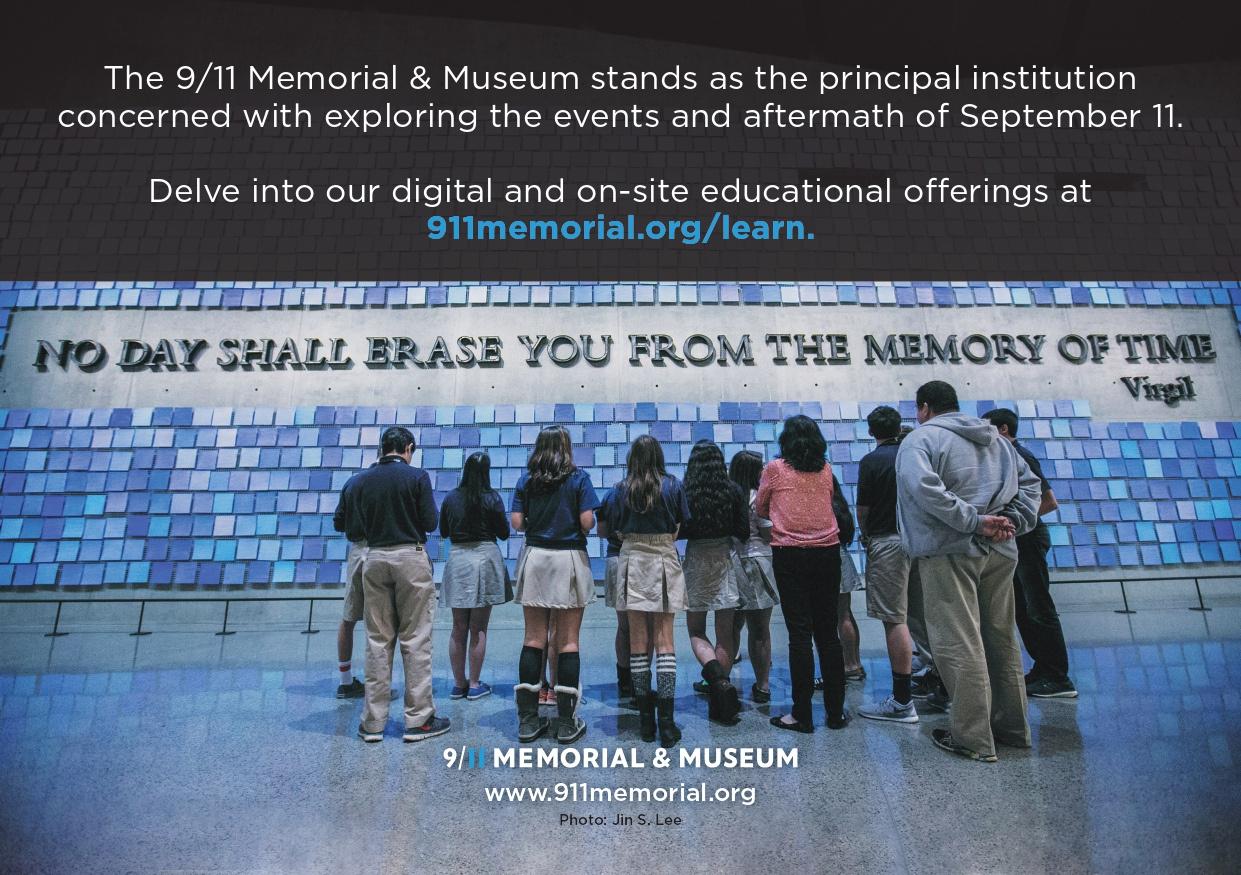

EachissueofSceneprofilesa theatrecompanyorgroupof artistsweareworkingwith. Thisgivesthemtheopportunity topresentthemselvestoour readers.HereMakhampom Theatretakescentrestage.
BY PIYASHAT SINPIMONBOON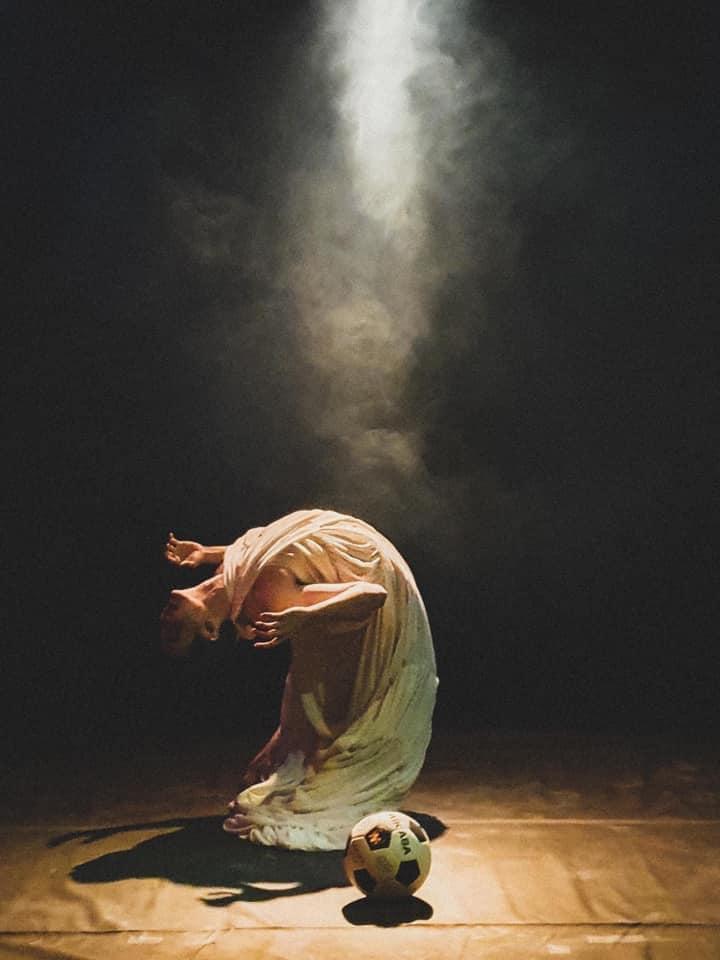
Makhampom Theatre uses theatre, puppets, stage performances, traditional music and mime to help develop communities by encouraging local people to exchange opinions and ideas and take part in community projects. At the same time, Makhampom also trains local people and youths in the community to produce communication tools themselves

The Makhampom Theatre Group has been called a family, a kindergarten, a university, a community and a theatre troupe. In truth, we are a social organisation that works in the medium of theatre. Makhampom was born in 1980, emerging from the Thai pro-democracy movement to apply micro media for awareness-raising. Today, Makhampom wears many hats – as a performance collective, as a youth theatre umbrella organisation, as a social activist group working with communities and movements, as a creative educator, as a peacebuilding facilitator, as an international collaborator and trainer, as a social entrepreneur and as a theatre collective of over 500 members and volunteers, locally and internationally.

Starting from our 1st base in Bangkok, we expanded to our 2nd home, the Makhampom Living Theatre in Chiang Dao district, Chiang Mai province in 2004 and has become better known as the Makhampom Art Space today. This 2nd base is a place of creative community art where art can reflect beauty and truth, arousing inspiration and stimulating a feeling of humanity and justice. A community program throughout Chiang Dao is integrated with Chiang Mai and northern youth, ethnic minority and education initiatives and the hosting of national and international exchanges, collaborations and events. The place is similar to a bridge that connects people from all social classes and ethnicities, both from within and outside the community, enabling them to come together and experience art in the form of theatre, outdoor sculpture, painting exhibitions, photography and
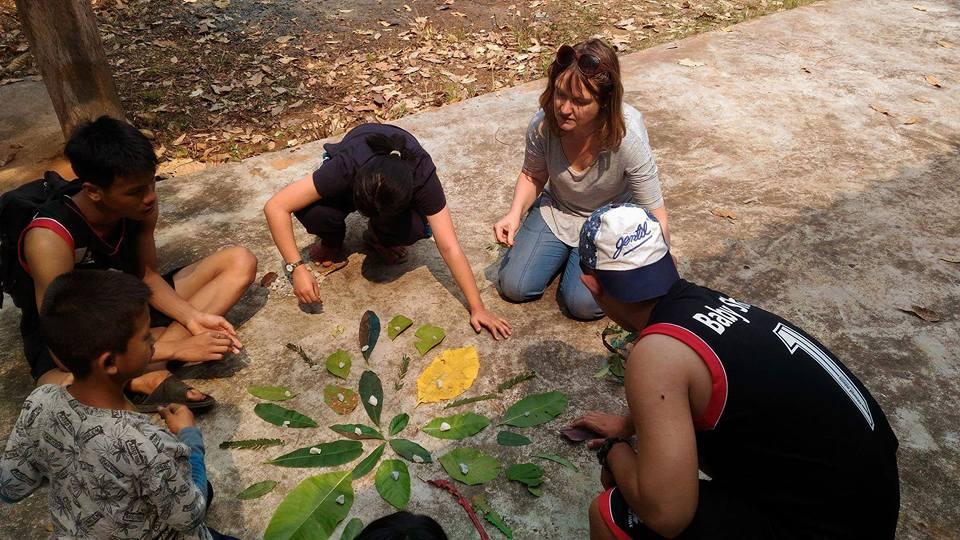
art fairs. It is a space where people can come and have fun with creative arts themselves Visitors are welcome to exchange ideas, become inspired, be experimental and or just take a break in the natural environment of an art space amid green rice fields.
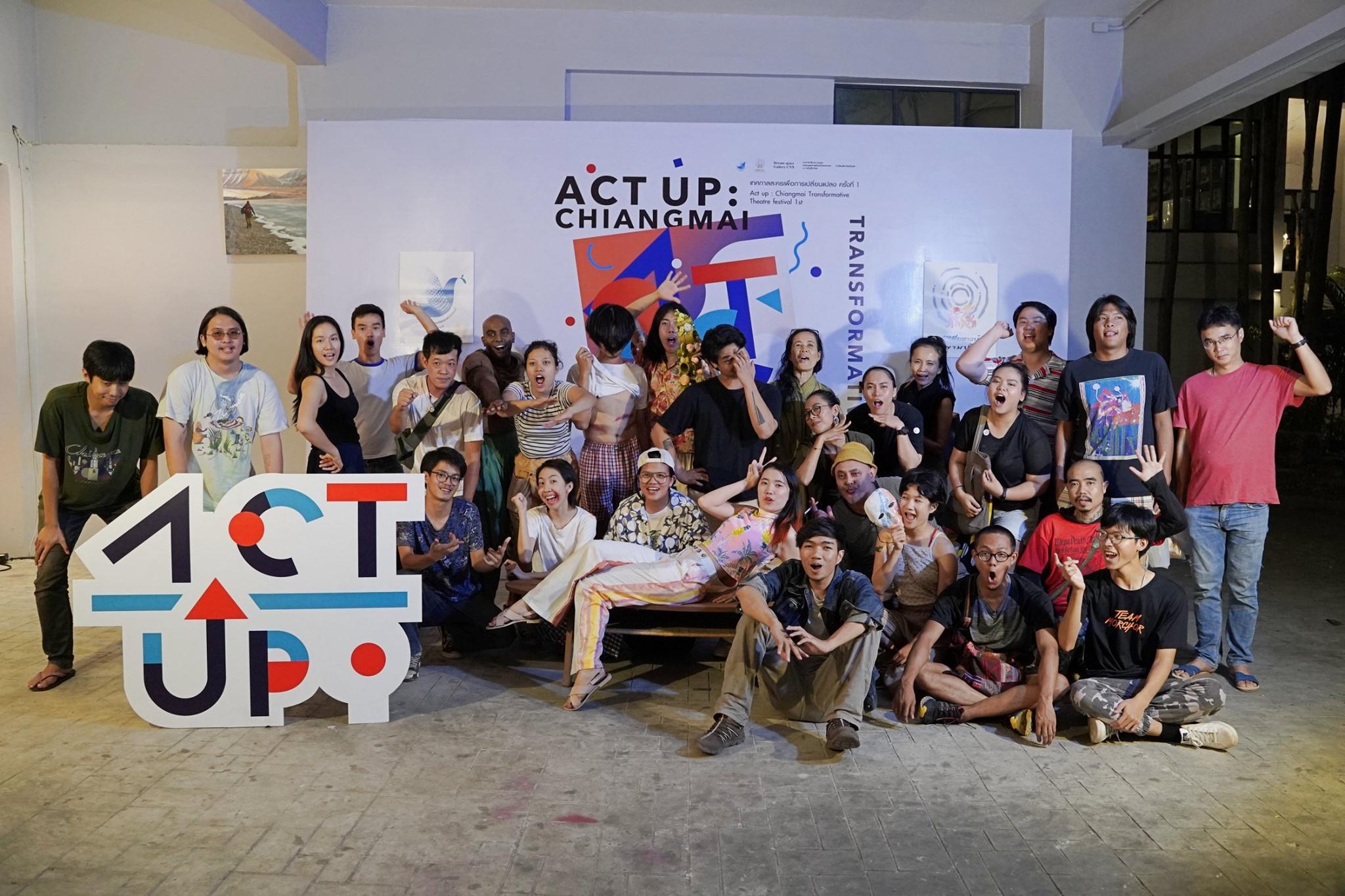
In 2005, we became the Makhampom Foundation to increase the scope and impact of our work and in 2013, the Gooseberry Arts company limited was registered as our social enterprise side of operations to bring our work to the public and partners while raising funds to sustain our group and keep our community projects running.
Our mission was defined as: applying theatre as a community media form to create connections between different sectors, regions and countries towards transforming Thai society and beyond. We believe in the power of theatre. Adapting various styles of performing arts has been our signature for decades, not to be the master, but to communicate, encourage creativity, express, prompt dialogue, entertain, provoke debate, strengthen cultural practice, open the creative mind and body and facilitate direct social activism.
The effect of COVID-19 started right after 2020 started Many of our projects had to be halted, some stopped and some cancelled. The Makhampom Art Space in Chiang Dao has lost more than 80% of its income as we couldn’t do any hosting or on-site workshops. All of our ongoing community projects had to be stopped We were all taken aback by the situation. And we froze… for a period of time.
I think it was resilience that has brought us back on our feet.
The project goal was to help local Chiang Dao residents to access and understand current, accurate and reliable guidance on how to prevent COVID-19 in their communities, leading to improved community resiliency and decreased misinformation. We produced printed hand-outs, voice clips and tent cards with digestible COVID-19 prevention information in different languages, a total of 8 languages. We held workshops to develop communication skills of village health volunteers. And later in the year, this project developed into its 2nd phase in which village health volunteers did workshops for primary school students.
There were gaps between each wave of the pandemic that we could host a few groups at the art space. That’s where we adjusted ourselves to the new normal measurements. It was difficult and frustrating at the beginning. But I’d say we’re doing it very well now as there have been no COVID-19 transmit cases from any of our activities despite the fact that we are in the high-risk area.
Maybe we recovered from the shock, maybe not. But many projects have resumed. At the local level - the universal design home for elders, the nutritional meals for kindergartens and the Chiang Dao local learning stations. At the national level - the national youth organisation network capacity building project, the transformative teacher project, the deep south youth issue-based photography project and the Mekong young storyteller project


The pandemic is not something we should be
thankful for, but it’s undeniable that it was agreat push for us to step into the new era of applied arts for social transformation. When we started to get familiar with the online tools, we learnt an important lesson; we can’t expect the same outcome performing on different stages. We thought that putting them online with a few adjustments would be enough. But that was wrong. The online approach has its own, unique dialect. We spent almost a year realising that. Now, we have many series of online workshops and even a performance for streaming.
We still love to see each other face-to-face and breathe the same air. But we also embrace every opportunity to connect as we understand how fragile connections are. The fact that we are here sharing this good time together is very meaningful to all of us, I am certain. ◾
‘Ithinkitwasresilience thathasbroughtus backonourfeet.’
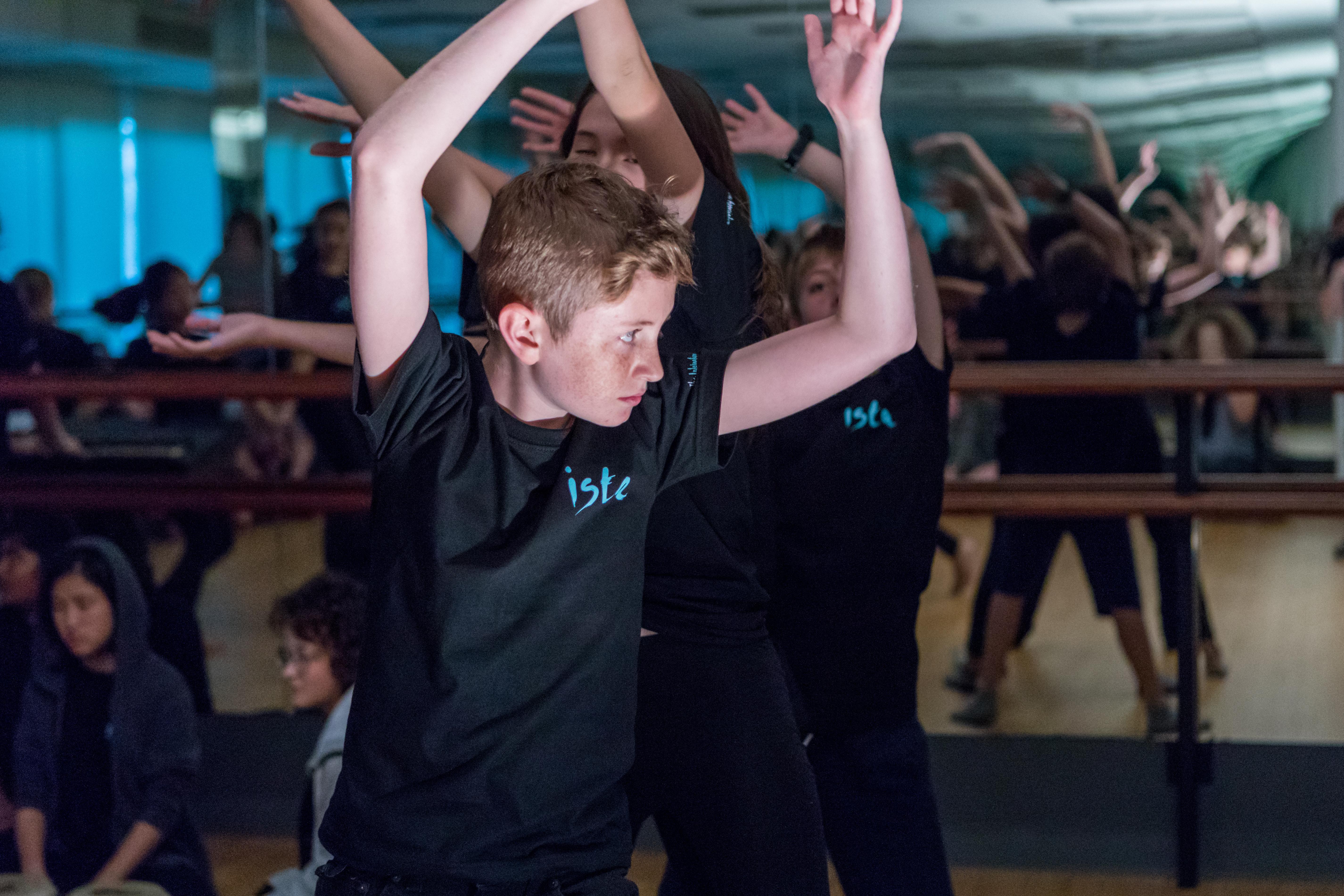
withthesupportfromtheatreteachers
DashaKozlovaandConniePanagakisHere Isabel Moraes shares a 9 week storytelling programme which was part of their MYP 1 unit titled ‘Express Yourself’ .
As we welcome our students into secondary school and to their first formal experience of a theatre class, we invite them into a journey of exploring a realm of traditions from around the world. The plans and ideas I share here are part of our MYP 1 Unit titled ‘Express Yourself’ , in which we have our Grade 6 students explore the concept of identity through the lenses of Theatre, Visual Arts and Music.
It is important to note that we meet each group of twenty four students for only nine weeks and during that time we have 2 lessons of 60 minutes each a week.
In this first unit we invite students to inquiry over the statement that
Students research a world storytelling tradition which allows them to gain deeper knowledge and understanding of different genres of storytelling, their contexts and how they are communicating a group’s identity. Students are also encouraged to develop their performing skills through devising their own performance work based on a story from a world culture.
While investigating storytelling traditions from different times, places and cultures, students are challenged to explore and experiment with a variety of techniques for presenting stories to an audience.
Using their Theatre Journals, students document and reflect on their processes and products.
 Above: “Knowledge Session: The Griot Tradition ” I Am Hip-Hop Magazine, 28th Jan 2016
Above: “Knowledge Session: The Griot Tradition ” I Am Hip-Hop Magazine, 28th Jan 2016
‘Art communicates identitytoan audienceinan expressive way’
This is how we breakdown our approach to this unit:
1 WEEK ONE
Introduction to Secondary Drama Rules, performance skills, journals, MYP assessment criteria. What is storytelling? How can we tell stories through Theatre? Simple storytelling activities e.g. one word at a time, one sentence story building, vocal skills practice with accents, pitch, tone.
2 WEEK TWO
Introduction to oral traditions in storytelling; discussion of storytelling traditions from students’ cultures and childhoods; introduction to the Research Presentation task.

3 WEEK THREE
Students are working on the Research Presentation task.
4 WEEK FOUR
Group performance work begins; students choose a story and begin to divide the roles, practice vocal techniques for each character, add movements to the story. Process journal planning; students document their group work activities and reflect on their success or need for improvement.
5 WEEK FIVE
Rehearsals and process journal; students continue to reflect on the process by thinking about how the implementation of techniques and vocal skills worked out, if there were any struggles with group work and how they overcome them
6 WEEK SIX
Students focus on developing a clear artistic intention in class time. Rehearsals. First showings and feedback.
7 WEEK SEVEN
Rehearsals and process journal; students reflect on how their piece showcases their artistic intention.
8 WEEK EIGHT
Final rehearsals with feedback from the teacher and peers and process journals final reflections.
9 WEEK NINE
Performances. MYP Criterion Bprocess work due. MYP Criterion D Formative assessment in class - self and peer evaluation and reflection
Students are to choose one of these storytelling traditions to research. Academic honesty guidelines must be followed. All images and quotes must be cited in the text of their presentation as well as in their bibliography.
Griots (West Africa) Naqqali (Iran) Rakugo (Japan) or Chinese Shadow Puppetry (China)

To help them get started, we provide students with the following starter links:
UNESCO Naqqali, Iranian Dramatic Story-telling
Diane Kitchijitsu
Chinese Shadow Puppetry
UPRISING ~ Prince Diabate, Modern day griot explains ancient storytelling tradition

Image credits: LibGuides: IB Theatre Research: ‘Rakugo’ . Rakugo - The Baltimore City College

‘How to Make Chinese Shadow Puppets’ . Marie's Pastiche, 'Drumming, storytelling brings people together' Clarion Ledger
Students are encouraged to present their research using the following structure:
Slide One Introduce the tradition, explaining where it originated and anything that influenced its development.
Slide Two The key features of the tradition, including its purpose (e.g. to inform, educate, entertain) and making explicit reference to our statement of inquiry.
Slide Three Three interesting facts about the tradition and one link to another storytelling tradition, e.g.
‘Chinese Shadow Puppetry is similar to Wayang Kulit because...’
Slide Four How your research has inspired you and how you can use one element of the art form in your own work.
Slide Five Bibliography (this must include any images that you have used as well as all other sources).
Students are required to create a poster to demonstrate their understanding of one form of world storytelling, explored and discussed in class and chosen by the student. This is to be completed on poster paper provided by the teacher and must clearly demonstrate the student's knowledge and understanding of the features and context of the form The poster should include text and images
Students are required to plan and create a poster of one of these storytelling forms (1) Griots (2) Rakugo (3) Naqquali or (4) Chinese Shadow Puppetry and to include the following details:

What is the storytelling form?
Key features of the form including its purpose (e.g. to inform, educate, entertain). Explain when and where it originated, to which culture the form belongs and what influenced its development. Three interesting facts about the form and one link to another storytelling form e.g. ‘Chinese Shadow Puppetry is similar to …because ... ’ .
For this assessment the students work in groups to develop their own 2 minute performance based on a given story from a world culture. They will need to use a range of storytelling skills, acting techniques and lots of creative thinking to help create an entertaining and exciting performance.
As well as the final performance, students are required to submit a digital process journal which includes:
3 photographs taken during different lessons that show them experimenting with and developing a new performance skill e.g. puppetry or physical theatre. Each photograph must be annotated to explain what they are doing and why.
2 process journal entries written during the devising process that explain key moments in devising their performance e.g. lightbulb moments, creative problem solving, decision making moments etc. These should focus on them as an individual as much as possible. Discuss: What in the story shows identity?
A group statement of artistic intention explaining the impact they want their piece to have on the audience, the purpose of their performance and any understandings they want the audience to leave with.
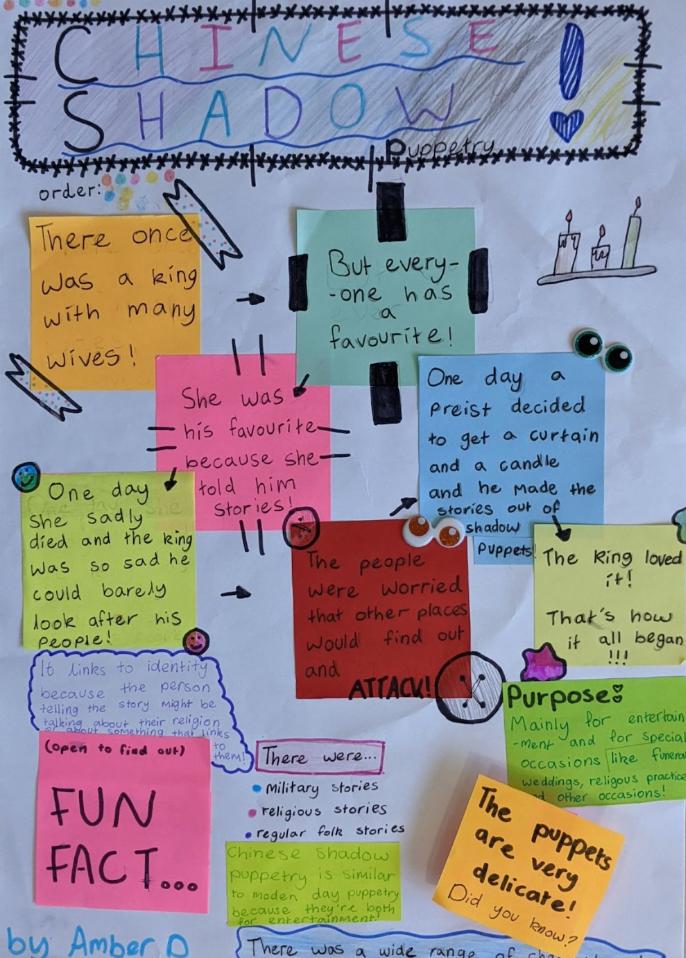 Some examples of student work
Some examples of student work
Students will submit an evaluation in 2 parts. In ‘section one’ they will reflect on their own performance work, both on their individual collaborations towards the creative process, as well as evaluating the extent to which they were able to achieve their artistic intentions. In ‘section two’ they will evaluate the performance work of one other group, focusing on how the group implemented vocal skills such as tone, volume, articulation, as well as movement skills such as whole body gestures visible to the audience, use of levels and depth. Students are given guiding questions to help them.
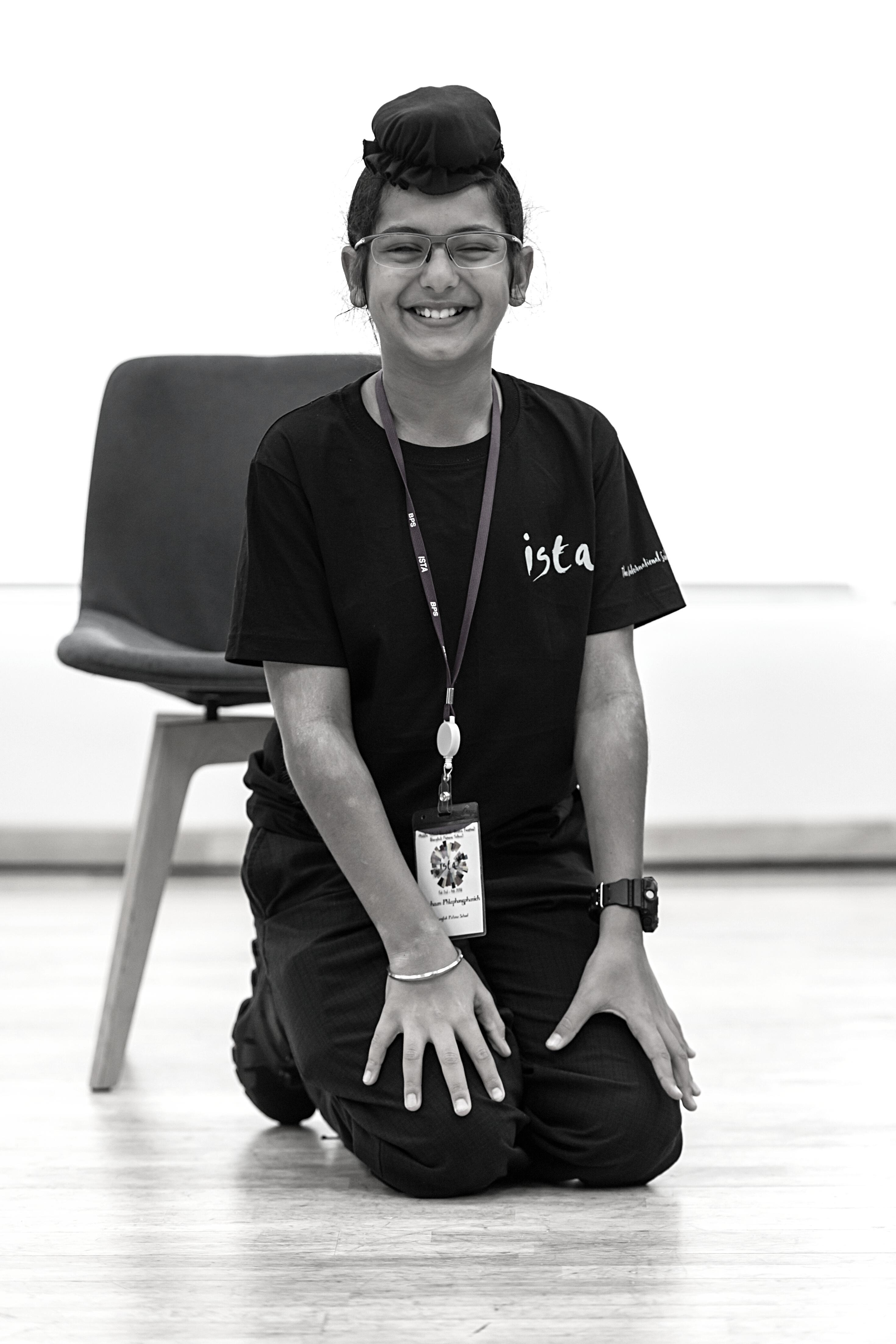
Choose from these formats:
A video blog (1 minute)
A voice recording (1 minute)
Text (one side of A4)
Annotated images/photographs (4 images)
‘Studentsarealso encouragedtodevelop theirperformingskills throughdevisingtheir ownperformancework basedonastoryfroma worldculture.’
This unit of work, aimed at students in Grade 9/Year 10 originally began as an experiment with students following the IB MYP where in the true sense of the IB programme we all agreed to be risk takers in trying something new. Students were introduced to the ideas behind Verbatim Theatre and its purpose to give those from marginalised groups a voice, enabling their stories to be told to raise awareness of relevant issues in the world.
A unit of work suitable for high school students focusing on verbatim theatre.
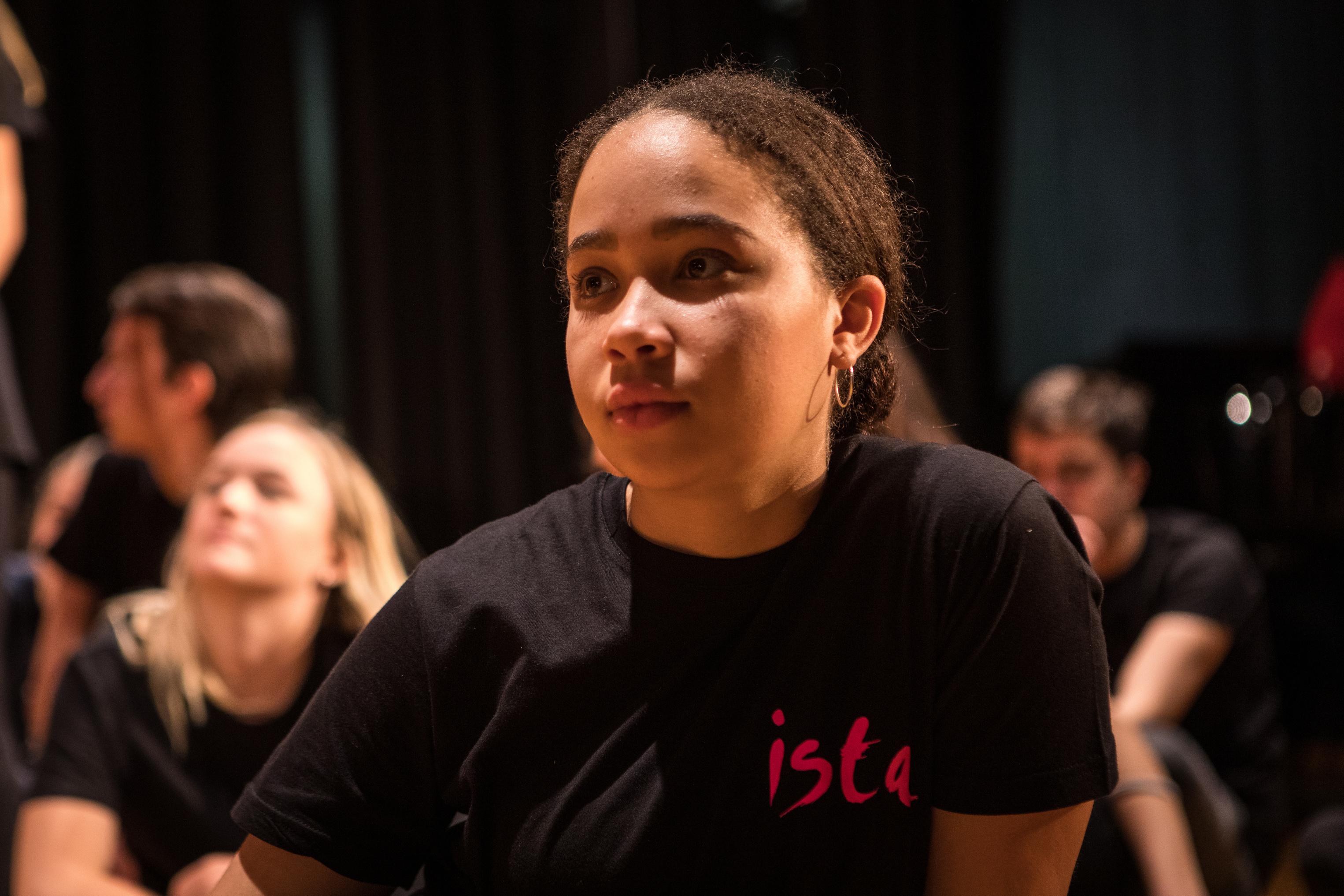
Learners were encouraged to explore the idea of using Greek Theatre as the vehicle in which to explore the world that they are emerging into and through which they could give a voice to those issues that they as students were passionate about. Thus, the students – as a classformed the Statement of Inquiry and wrote the subsequent Inquiry Questions they then went on to investigate.
Is Greek Theatre a viable vehicle for Verbatim Theatre?
Is Theatre effected by the real world events?
What are the major contrasts between the conventions of Greek and Verbatim Theatre?
Learners began the unit by investigating Greek Theatre, focusing on its performance conventions and in particular, the Greek Chorus, exploring the chorus gestures and moves to understand the impact of using in unison movement and cannon movement alongside the expression voice could add to the performance. Students used an extract from the chorus in Oedipus Rex, taking only a stanza to try out ideas practically and to consider the impact of pace and pause when applied to different gestures in communicating an artistic intention.

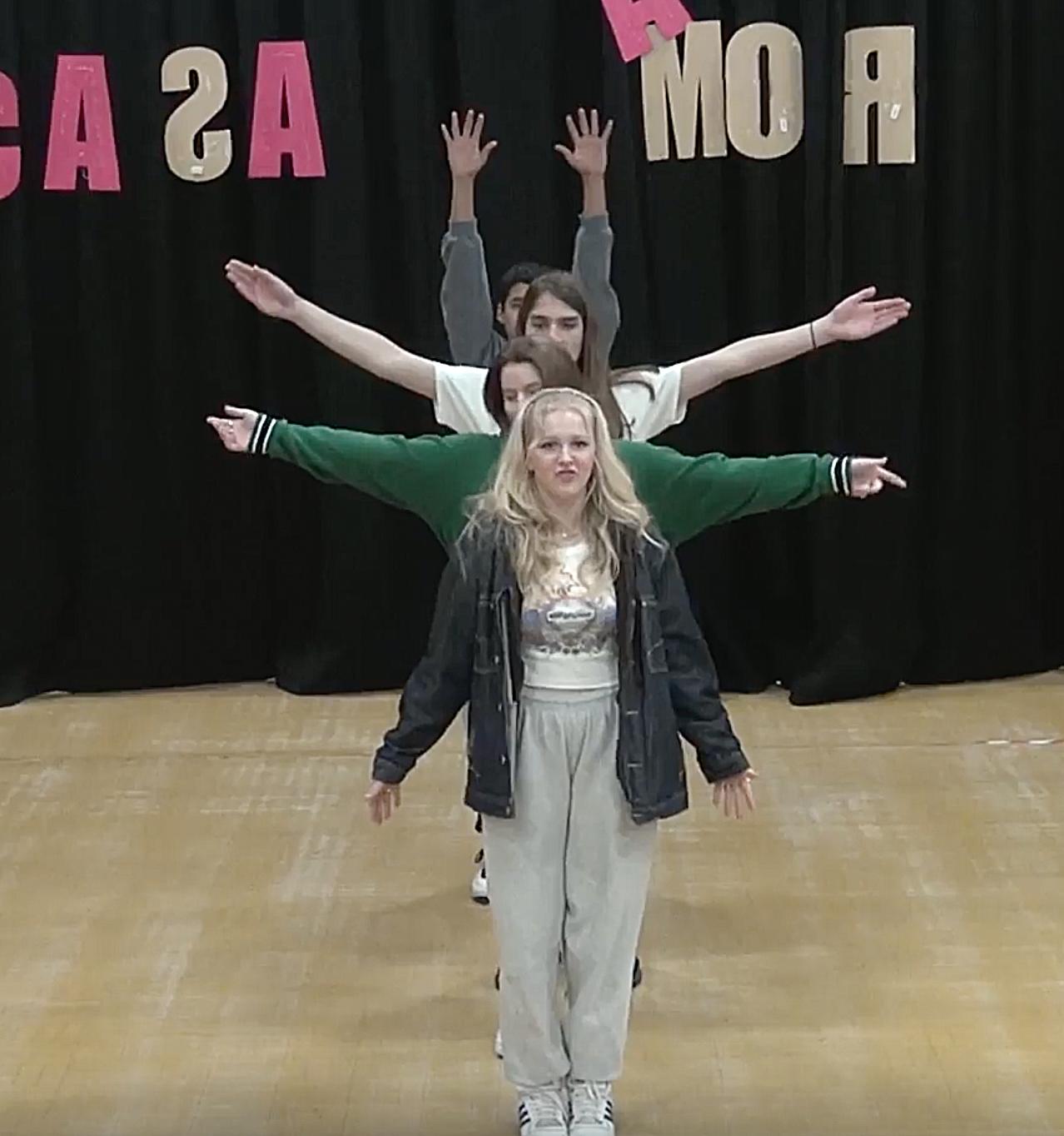
The exploration of the world through theatre really started when the students created their own groups (minimum of 2 people and a maximum

of 6) and through a series of short exercises
considered different ideas they had, discussing issues they were passionate about, and felt the world needed to be more aware of (see Fig. 5). This unit really brought to the fore those issues that students were not only interested in but felt that society needed to sit up and take notice of – this was their opportunity to do so! Once their topic/issue was chosen, learners had to research first hand accounts, primary sources, interviews and select those extracts that they felt could best be used to create an impactful performance - piecing them together with gestures, movements, vocal work and building to a climax in a powerful manner.
‘Whatstartedoutasan experimenthasbecomea personalfavouriteunitdueto ithighlighting–initstruest sense–thestudentvoice.’
The student work was far more dynamic than originally expected and the freedom to choose and express themselves and their ideas through firsthand accounts was revitalising, however, at first, students had to be guided away from narrating a story while others acted it out. Once they grasped the concept of using a chorus to comment on society and to question society’s values, morals and principles through making an audience aware of
The firsthand accounts that students found in the form of interviews helped stimulate interesting ideas for in unison or cannon movements, coupled with exaggerated expressions and gestures. The use of pace and pause, with learners varying solo speakers with choral verse was hugely effective, leading many to comment in their reflections on how powerful vocal dynamics were in different performances, which created an undeniable
order to create a more impactful performance. This in and of itself made students focus on being resourceful and ensured that the voices they were representing were portrayed in a sensitive and respectful manner which did not detract from the impact their performances had.
The best outcome of the unit was students answering their own inquiry questions through the process and as a teacher, being able to watch that ‘penny-drop moment’ was priceless As with the true nature of inquiry, although the questions the students had initially asked were answered, they now had new questions and lines of inquiry to go on to explore.
The diverse list of topics chosen ranged from domestic violence, child labour, gender identity and grooming to Kamikaze pilots’ perspectives, forced marriage and manipulation.
Although the maximum performance time given was 5 minutes, all performances were under 2:30 minutes as students were encouraged to go for quality over quantity in
The unit was titled ‘Giving Voice to the Voiceless’ and its purpose was to assist students in understanding the power of their own voices in order to raise up the voice of others who need encouragement to do
so. What started out as an experiment has become a personal favourite unit due to it highlighting – in its
‘Thisunitreallybroughtto theforethoseissuesthat studentswerenotonly interestedinbutfeltthat societyneededtositup andtakenoticeof.’
truest sense – the student voice. This unit has helped me as a teacher to value taking risks and to try out ideas, and to appreciate more than ever the joy and privilege it is to enable students to find a way to explore our world in all of its complexities and contexts through Theatreand start in small ways to make sense of it - but more importantly to understand the potential they as students have to create change for the better. ◾

*Although it must be noted that the photographs in this article are of work and task sheets that are relevant to the old MYP course (2014), the same tasks are being edited and reworked to align with the new MYP course beginning 2022, with both versions being available to download for use here.
‘Thisunithashelpedmeasa teachertovaluetakingrisks andtotryoutideas,andto appreciatemorethanever thejoyandprivilegeitisto enablestudentstofinda waytoexploreourworldin allofitscomplexitiesand contextsthroughTheatre.'
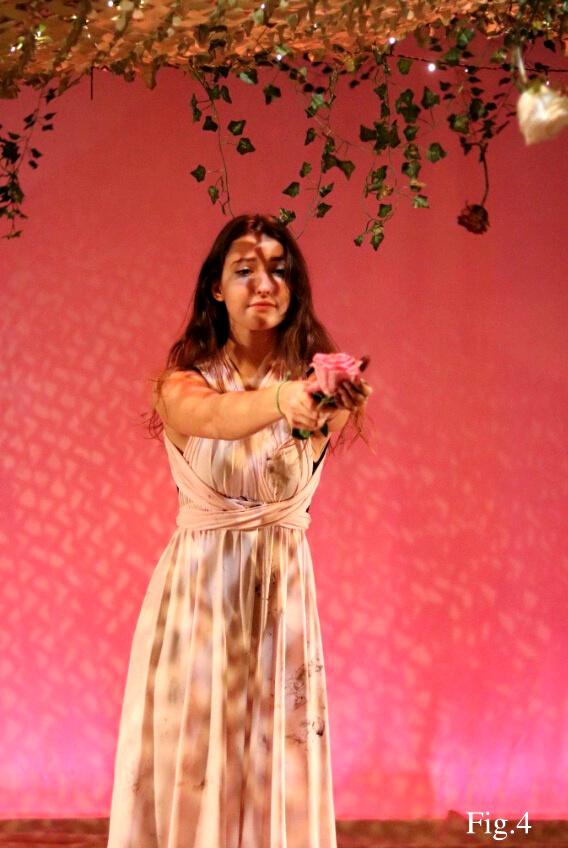
Throughtheatre,ISTAaimstoempoweryoungpeopletohave theconfidencetoexpresstheirviewsandbelievethattheir opinionmatters.EachissueofScenewillthereforefeaturea student’svoiceandofferaplatformforlearnerstospeakfrom theirperspective.HereAnisaNushi,fromtheInternational SchoolofGenevadiscussesherexperienceoftheatreand howitshapedher,notonlyasaperformer,butasaperson consciousoftheirplaceandimpactintheworld.

Defining the purpose of theatre is a concept that as a learner, I continue to build on every day. While some may say the purpose of theatre is to entertain, I have discovered through my own personal journey that theatre itself allows us to time travel and teleport simultaneously. Without realising it, I found myself going back and forth in time and visited parts of the world I had never even heard of. Throughout this article, I will be touching on the journey I underwent as a performer and how theatre allowed me to express global issues I was passionate about while introducing me to new cultures.
As a child, my view of theatre was naive. I believed that the best forms of theatre, the most impressive and intricate works were those that were the most famous such as the production of Peter Pan or Alice in Wonderland. Theatre to me meant
learning lines and delivering those lines before an audience - this was my view of ‘traditional theatre’. What perplexed me the most when I reflected on it, was that I had grown up doing show after show, performance after performance without any regard for where theatre came from, what it looked like in other cultures or the capacity theatre actually has to express almost anything you could ever wish to express. However, something I knew was that theatre made me happy. It allowed me a gateway into a world where I could express myself beyond limit but also escape daily life by taking on a character. Despite this, I was imminently shortsighted.
My curiosity of theatre blossomed after researching the Chinese theatre tradition of Peking Opera during my IB experience. Through the first module of the IB Theatre programme, we were required to create a research presentation on a foreign theatre tradition. I discovered that the traditional role of Peking Opera was to perform for the gods in order to be granted good luck, harvest, fertility etc. Peking Opera is directly linked to Taoism with a strong purpose in connecting our world and heaven and became a method used to travel from one dimension to another

and to unify oneself with heaven. Beauty is imperative to this theatre tradition. Considering they are performing for the gods, a performer deals with high stakes as every movement and gesture must be perfect. This symbolism and spiritualism in theatre was also present in many other Asian theatre traditions such as Khon theatre from Thailand and Wayang Kulit (Balinese puppetry). It was through my classmates, teachers and workshops that I had the privilege of discovering these other forms of theatre.
1. Brandon, James R., and Martin Banham. The Cambridge Guide to Asian Theatre. Cambridge University Press, 2009.
2 Zhang, Lijuan “The Relationship between Daoist Rituals and Theatrical Performance: The Case of Xianggong Tapeng in Puxian Theater ”
MDPI, Multidisciplinary Digital Publishing Institute, 14 Oct 2014, www mdpi com/2077-1444/5/4/1001/htm
‘Itallowedmea gatewayintoaworld whereIcouldexpress myselfbeyondlimit butalsoescapedaily lifebytakingona character.’
Discovering these forms of theatre was truly eye-opening to me as a performer as I discovered a deeper purpose of theatre; theatre can be symbolic rather than just entertainment. It wasn’t until I underwent the strenuous process of Peking Opera training that I truly understood what it meant to use theatre for a bigger purpose. By exploring other global traditions I was able to understand how theatre works in other countries and how exciting it is to celebrate and learn about new cultures.
By being exposed to theatre from around the world, I felt as though my own works were improved. When creating new pieces of theatre I was able to incorporate far more variety in the way I wanted to present a piece. In addition, exploring world theatre made me reach out of my comfort zone During the final module of the IB Theatre programme, I had the opportunity to create a solo performance. Within a solo performance, one must choose a theatre practitioner and create a piece which encompasses their theory and main aspects that is representative to their interpretation of theatre. Naturally, I would have felt most confident in designing a piece which was primarily monologue based and where speech was a primary factor as that was my strong suit However, I chose theatre practitioner Pina Bausch who wishes to use movement driven pieces to ‘express something I couldn't express with words at all’ as she states. This meant that I had to challenge myself and only use movement in a piece. By being exposed to theatre from around
the world such as Peking Opera and Commedia dell’Arte, I found myself not only feeling more confident in movement theatre but actually being able to convey emotions in a more sincere and real way. This was because I was exposed to theatre which held a deeper purpose.
My piece was focused on the theme of grief and the emotional stages one undergoes when losing someone. One of the primary aims and aspects of my piece was to generate an emotional reaction from the audience as Pina Bausch’s theory wished for the audience to embrace the emotional journey a piece can take them through. What I truly admired about having an emotionally centred piece was that it inspired the audience to share their own personal stories and experiences of which my piece reminded them of. This was what theatre was all aboutstorytelling. This was an enlightening moment for me that inched me closer to what I believe the purpose of theatre is. Theatre allows us to address global issues such as mental health
'Itisawaytobring peopletogetherinto aspacewhere diversityandculture isembraced, appreciatedand taught.’
and grief, to share it with others and thus allow people to open up and share their own stories. In this way theatre can be a portal through which our human nature is unified
In my overall journey as a young performer I am still formulating what I believe the purpose of theatre to be Something I can confidently state is that theatre becomes richer the more diverse
more flexibility to play and explore creative ways of expressing myself. Moreover, I believe that theatre itself is a way to spread love to others as it brings people together, whether it be through laughter and comedy, sadness and emotion, confusion or even purely in an educational manner. It is a way to bring people together into a space where diversity and culture is embraced, appreciated and taught I will forever continue to admire theatre for its qualities of togetherness and open mindedness and

Elana works as a freelancer with schools, nonprofits and arts centresinternationallytodevelopprogrammesandworkshops thatfocusonfosteringcreativeselfexpressionandconfidence.

I am Taiwanese American. I was born in Houston, Texas and since then, I've lived a little bit around the world. I grew up in Shanghai and from there in London, where I studied, onto Taiwan, which is my home country. I'm currently living in Barcelona in Spain. Other than that, what else…? I am a scuba diver, I love Latin dancing, I love sushi and I also love petting dogs.
I am a freelance applied theatre practitioner, which essentially means that I work on a freelance basis and I have different clients doing workshops or courses based on drama, education, public speaking, etc. I am also a teacher trainer and work with a company here in Spainwhere teachers from around the EU come to Barcelona and I deliver professional development courses for them, usually in drama education.
You know, it's a great question. I think it's played a really fundamental one. I remember when I was applying for university, I thought to myself ‘theatre, it's the arts and I’m not really sure what kind of pathways there might be in terms of career…’ But attending the ISTA festivals allowed me to meet so many amazing people from all over the world and it was really inspiring to see, in such a short amount of time, within a few days, we were able to create synergy between each other. We were able to create these incredible, diverse, really cool performances. I think having that in mind, I thought, you know what, this is a really empowering sector to work in And I'm interested in it. And at that time, I didn't even know what I wanted to do for my career, so I thought, it just has to be theatre! Definitely, the ISTA festivals and the connections and the relationships that I cultivated, they were and still are a huge part of my journey
Also a great question! I would say my advice would be to have conversations with people. I mean that in any and every kind of way. Have conversations with people who have jobs that are interesting to you. Have conversations with people who have different experiences, backgrounds, hobbies, interests, anything, because I think there's so much to learn from everybody. And the more we diversify our perspective, the more we can see things in a colourful way. It really adds value to our lives, or at least it has for mine.
I believe that arts experiences have immense value in work and life. For example, in my work, it's the crux of what I do Looking at how the arts can nurture development as a student in terms of academia, but also develop the student in terms of just themselves, the individual. It’s really powerful that you can teach hard skills and soft skills through the arts in a creative and dynamic manner Also, if we think about a world with no arts, with no theatre, with no music, with no visual arts, the world would not be nearly as beautiful or enjoyable to live in. So, in that way, it's also a really significant value to life in general as well.
Themorewe diversifyour perspective, themorewe cansee thingsfrom multiple perspectives.
Whatisthevalueofarts experiencesintheworldof workandlife?
We’re thrilled to have developed some new partnerships and collaborations which provide us with opportunities to work in new places, with exciting organisations.
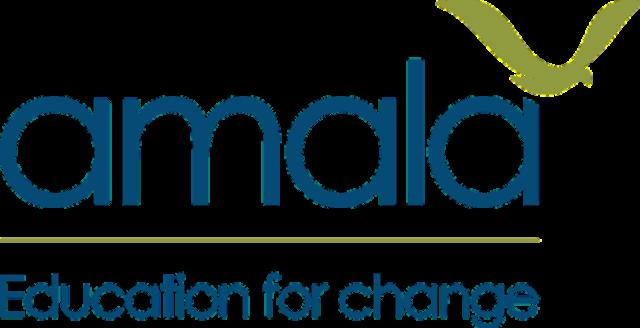
This will be a new ISTA Global Site of Learning, alongside the Terezin Memorial in the Czech Republic. We hope this will be an annual event offering young people and educators to explore the stories of this important site and moment in history through theatre.
We’re excited to be running an IB Category 3 Film workshop at the BFI in London from the 3rd- 5th February 2023. Book your spot.


The BFI provides a site of training for film and theatre teachers and offers an incredible archive of film that we hope to work with in the future.
ISTA is partnering with Amala, an organisation whose mission is to use the power of education to transform the lives of refugees, their communities and the world. We are running a project with young refugees and displaced young people as well as offering artist-educators a unique training opportunity. Learn more here.

ISTA Global Centres of Innovation will be located around the world and developed in partnership with international organisations that share ISTA’s values and commitment to global learning through theatre and the related arts.



We plan to develop a network of 6 centres by 2024 with the first three established in 20222023. These will also be centres of ISTA artist training and global hubs for conferences, workshops and the dissemination of our discoveries and models. We are proud to announce our first two centres:
Artist Residency Thailand and Traidhos Three Generation Community for Learning, Chiang Mai, Thailand focussing on the CONNECT Model and engaging with local communities.

Near West, working in Guangzhou, China and Fairfax County District, Virginia USA focussing on the engagement of non-fee paying public and local schools.

We are delighted to be working with a number of innovative and inspiring theatre companies and artists at our TaPS Perspectives events in Chiang Mai, Hong Kong, London and New York. Here’s a look at who will be joining us:
Collaborativelycreating originaltheatre& Workshopforteachers
TeerawatMulvilai (Kage)
B-FloorTheatre
Exploringworld theatretraditions
BenjaminTardif KhonTheatrespecialist
IBDPTheatrePerspectives
DarrenScully
Performingtheatre theory
Piyashat Sinpimonboon(Ap) MakhampomTheatre
StagingPlaytexts
JittiChompee 18MonkeysDanceTheatre
HongKongTaPS
Collaboratively creatingoriginal theatre
WencongChen Immersivetheatreartist
Exploringworld theatretraditions
WongPikKwan ChineseOpera specialist
IBDPTheatre Perspectives
DeanKrawchuk
London1TaPS
Collaboratively creatingoriginal theatre
MollyFreeman
SmokingApplesTheatre
Exploringworld theatretraditions
SuhaniDhankiMody
BharatanatyamDancetheatre
IBDPTheatre Perspectives
MoiraArthurs
Performing theatretheory
Anna-HelenaMcLean MoonfoolTheatre
StagingPlaytexts
SimonFielding IndependentArtist
Teacherworkshop
AdrianJackson IndependentArtist,Founder andformerartisticdirectorof CardboardCitizens
London3TaPS
Collaboratively creatingoriginal theatre
HelenBarnett
Trestle
Exploringworld theatretraditions
SuhaniDhankiMody
BharatanatyamDancetheatre
Performingtheatre theory
GuillaumePigé TheatreRE
StagingPlaytexts
DavidFurlong ExchangeTheatre
Performingtheatre theory
SeanCurran TheatreduPif
StagingPlaytexts
MelissaLeung
CompanyDramaturgof CityContemporaryDance Company
Teacherworkshop
WilliamWongKa-kui BlankSpaceStudio
London2TaPS
Collaboratively creatingoriginal theatre
BenVardy TheWardrobeEnsemble
Exploringworld theatretraditions
AdaBurke Karagöz&Hacivat
IBDPTheatre Perspectives
FenellaKelly
Performingtheatre theory
SianClarke
TheChekhovCollective
StagingPlaytexts
DavidFurlong ExchangeTheatre
Teacherworkshop
HattieThomas SmokingApplesTheatre
NewYorkTaPS
Collaborativelycreating originaltheatre
AnaMargineanu PopUPTheatrics
Exploringworld theatretraditions
MayoMiwa Nohtheatre
Performingtheatre theory
PingChong+Company
StagingPlaytexts
HeatherLanza Waterwell
IBDPTheatre Perspectives TobyPeach ConeyTheatre
Teacherworkshop
IBDPTheatre Perspectives
Teacherworkshop
PingChong+Company
SherriSutton
RobWarren/SamPierce
We have curated our FAQs into one helpful space so that you can find everything you need. This month we are focusing on our services including:
ISTA’sArtistinResidence(AiR)programme bringsinspiringprofessionalinternational artistswhoareexpertsintheirfieldintoyour schooltoworkwithyourstudentsorstaff.
Both! Our AiRs can travel to your school and work with your students face to face or run virtual workshops with your students. There are benefits to each type of experience
The face to face experience allows your students to engage in person with the artist and the theatre skills but come with additional costs of travel and accommodation The virtual experience is delivered in an online setting but allows you to access artists from all over the world without any additional costs.
The skills listed are the individual’s main area of focus but a number of our AiRs specialise in many other aspects of theatre. If you cannot see what you are looking for, please contact us and they will be happy to discuss your needs
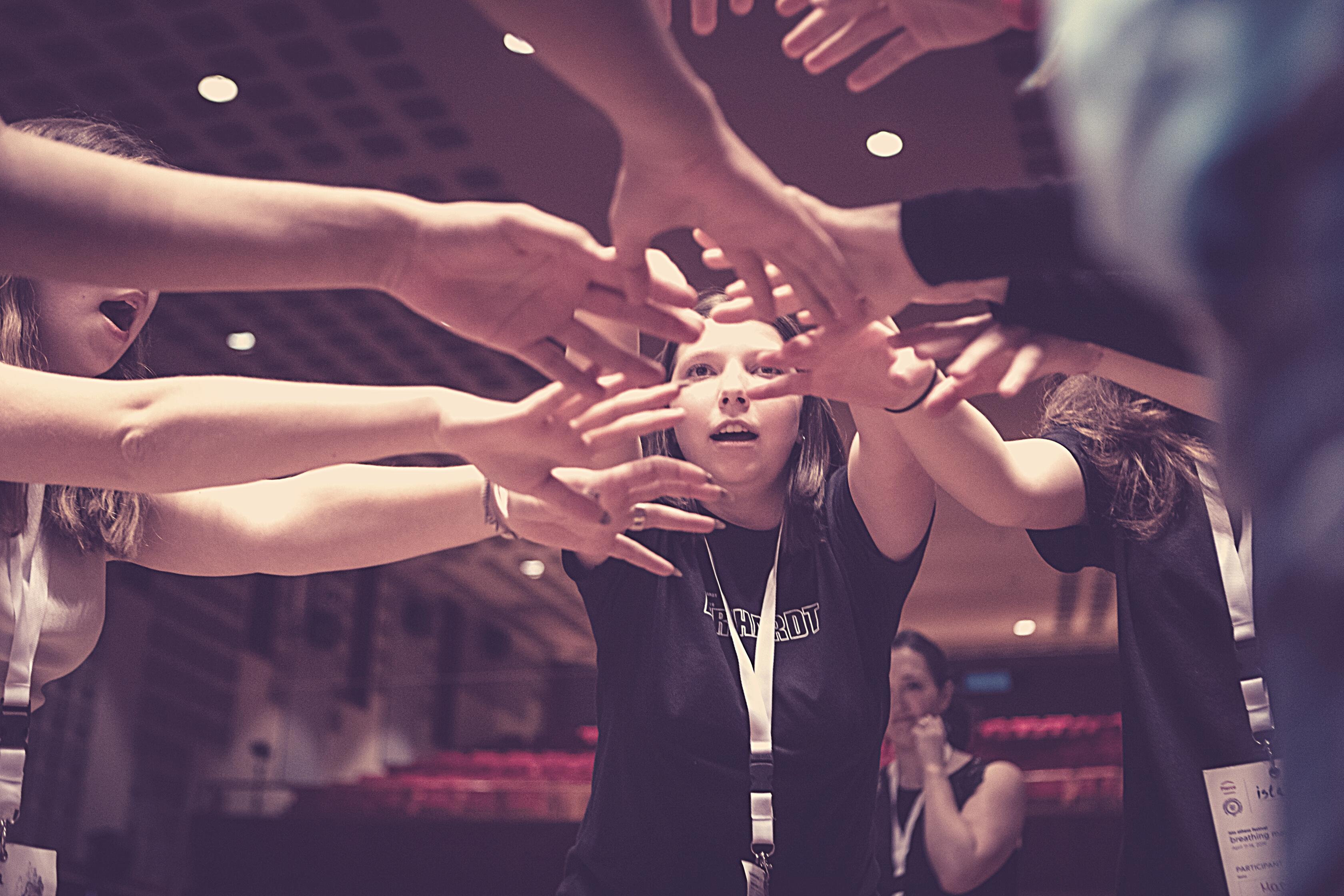
Absolutely! You can book an AiR to work with a class year group for half a day or over a few weeks or months Many of our ongoing AiR projects work alongside curriculum plans and student learning
All AiR artists:
Are professional practising artist in their specific skill/practice of theatre and/or artist-educator
Have recent professional experience of their specific skill/practice of theatre
Are experienced in both the performance of and the breaking down of their skill/offering into elements for students to understand.
Experienced and confident working with young people.
TheISTAmentorprogramoffersprofessional supportanddevelopmentforteachersor artistslookingtodeveloptheirowncareer, educationalknowledgeorthoserequiring assistanceinaspecificarea.
Yes, many of our mentors are experienced IB D teachers and examiners and can provide mento support to you as a teacher delivering the cours
Not at all We offer bespoke AiR programming, Mentoring support and Consultancies across a number of curriculums.
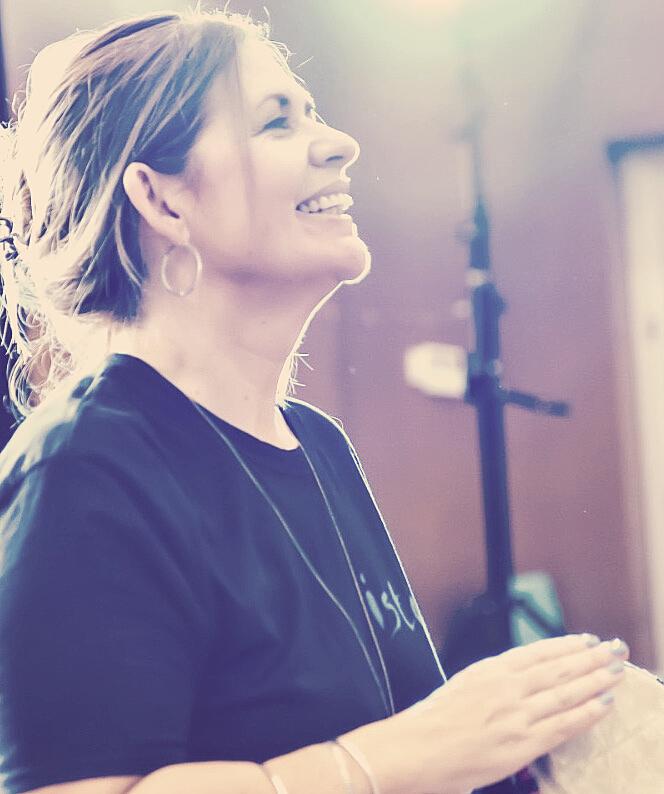
Absolutely! A mentor can work with your curriculum objectives to help you redesign a curriculum for your students and school.
Sometimes we don’t always know where we ne help or support and a mentor would work with to explore how they can best support your professional development
ISTAisaleadingorganisationininternationaltheatreeducationand weareproudtohaveoutstandingconsultantsworkingwithus
Our Consultancy and Mentoring programme is aimed at whole schools, departments or individual teachers.
Yes, absolutely. The length of a consultancy depends on what the school is looking to achieve. We have consultants who can lead and support the development of an entire curriculum or can join the school for 1 day to lead a whole school PD Whatever your needs, just ask and we can discuss the details.

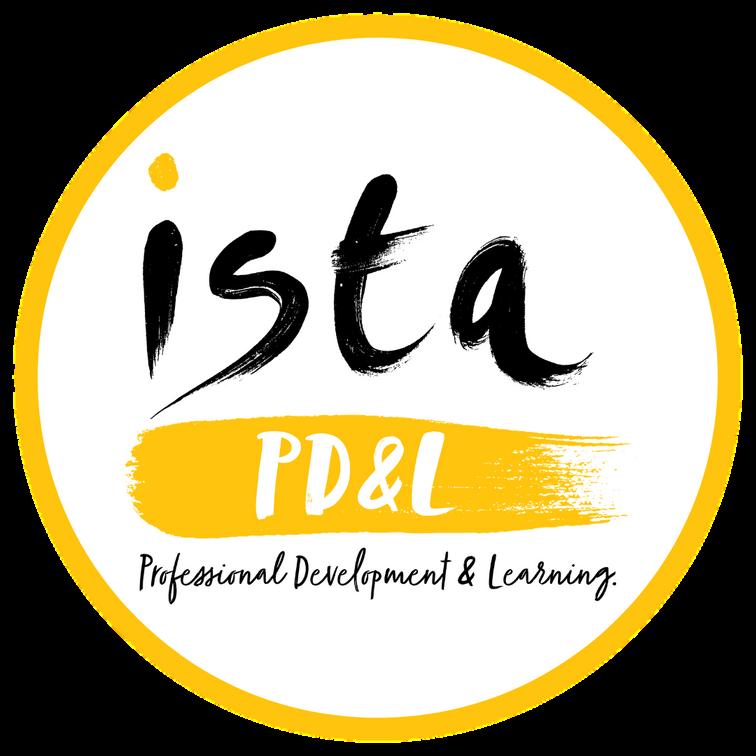
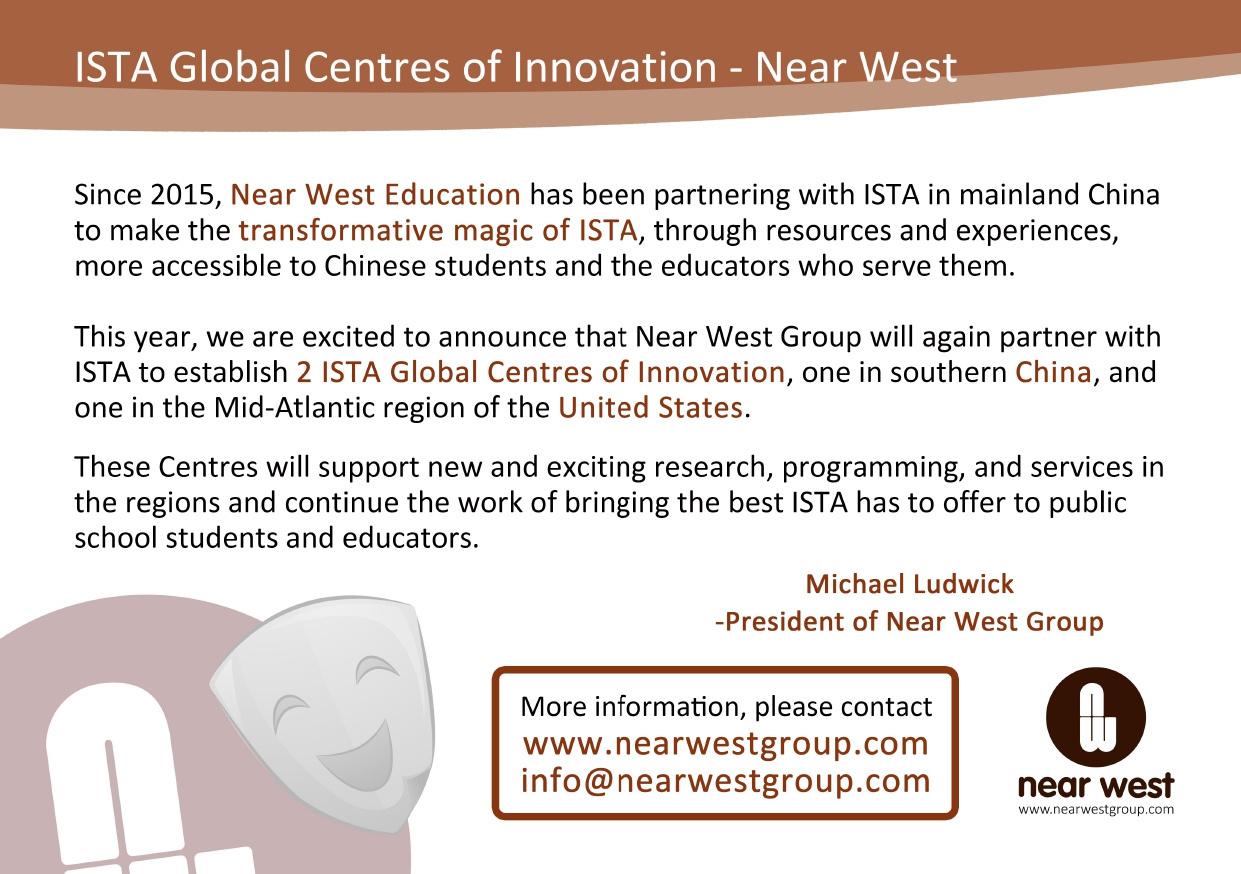
Megan is a Lecoq-based director, performer and playwright. She teaches Physical Theatre and devising at the Neighbourhood Playhouse conservatory in NYC. She’s interested in surprising physical ways to devise new and old stories like masks, tragic chorus, and documentary theatre.
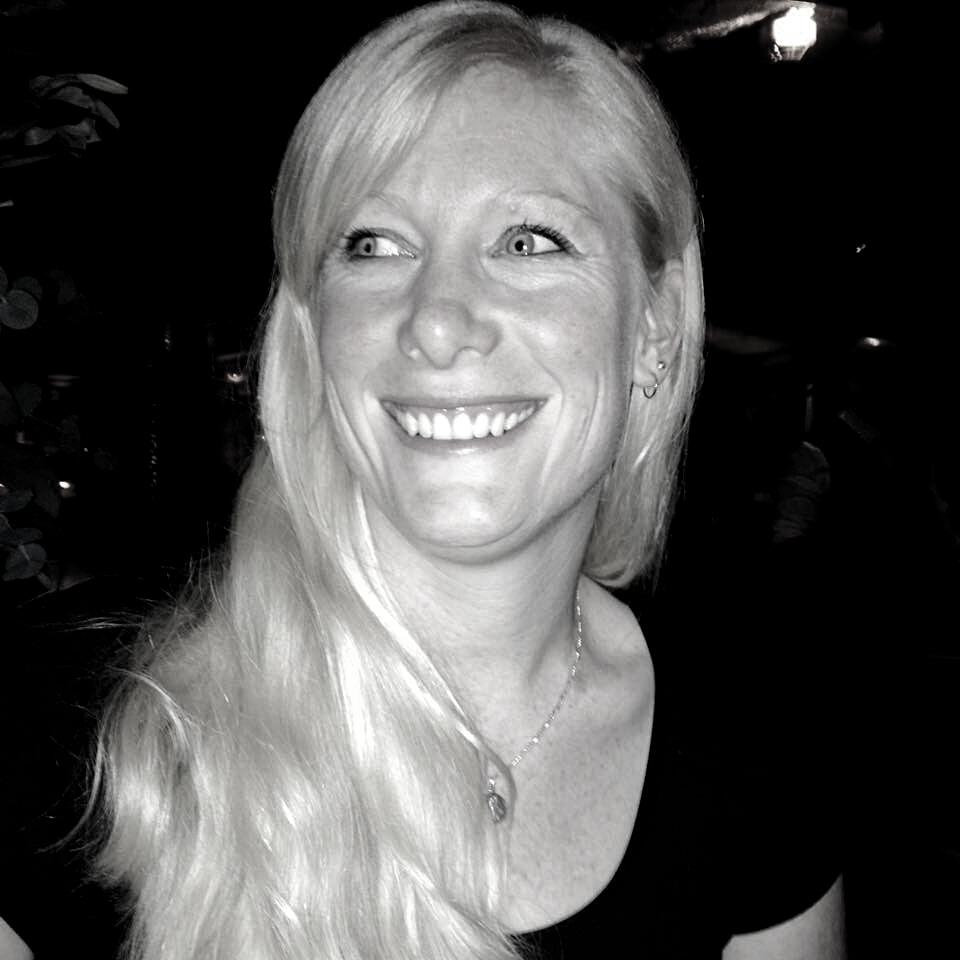

Her last international production was a collaboration with Chinese and American artists on a play she wrote. She also received a Fulbright Specialist Award to work with Tatbikat theatre in Turkey on Tragic Chorus and Neutral Mask. Her job was to offer tools for expression in a country where women’s rights are increasingly circumscribed. Her next project is a Larval/Basel mask play about immigration. www.megancampisi.com
I started my career as a puppeteer touring educational theatre shows around South Africa and doing children’s entertainment, as well as working as a voice artist, before moving overseas and getting into teaching.
I have taught both Drama and English in State and International schools in different countries, finally settling in the UK at ACS Egham International School where I teach the IB MYP Drama and DP Theatre Arts courses. I believe in the IB system and love the inquiry-based learning that happens in classes, being able to help students grow and learn as individuals in many different ways.

I am a traveller, theatre-maker, teacher, learner, story collector, storyteller and animal advocate, although not always in that order. After being fortunate enough to teach IB Theatre in Zimbabwe and Morocco, I am back in the US, teaching and enjoying the collaborative artistic journey as ISTA evolves to the changing times.
Artistically, I am particularly enamoured with staging Shakespeare with students, Commedia dell’Arte, Verbatim, Deaf Theatre and engaging students with movement and body work on stage.
I’m of Ukrainian descent, though I was born and raised in the UK before moving to Spain where I taught Music and Drama. I taught MYP Arts and IB Theatre in Azerbaijan where I led the Arts Department. Now based in Italy, I hold an MA in Theatre and am a research-based author of texts on the impact of Drama/Theatre on Student Wellbeing including, The Art of Wellbeing Through Drama/Theatre Education for National Drama.
Having contributed to the curriculum development for the MYP, I have gone on to lead workshops for MYP/DP Theatre teachers. I continue to expand on my training with the Tectonic Theater Project and enjoy sharing the diversity of their work. My interests are rooted in contemporary forms of storytelling such as collaborative, devised and immersive work, along with physical theatre and the development of technical innovations which continue to influence theatre spaces worldwide.

Isabel Moraes is the Head of Visual and Performing Arts at Bavarian International School, where she's been working as a Theatre teacher since 2018. Originally from Brazil, Isabel has lived and worked in Belgium, India, and Morocco prior to moving to Germany. She holds a master degree in Educational Theatre from NYU, and ia passionate mom, artist and educator.

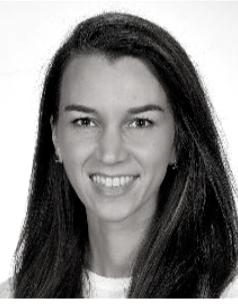
Hello, my name is Anisa Nushi and I am 18 years old. I grew up in Switzerland but have just completed the IB program in the International school of Geneva. I will be moving onto my studies in the University of York, pursuing a LLB bachelors degree in Law. My passion for theatre began as early as seven years old and have been participating in numerous plays and workshops ever since then. I hope to continue to explore the world of theatre throughout university and for many years to come.
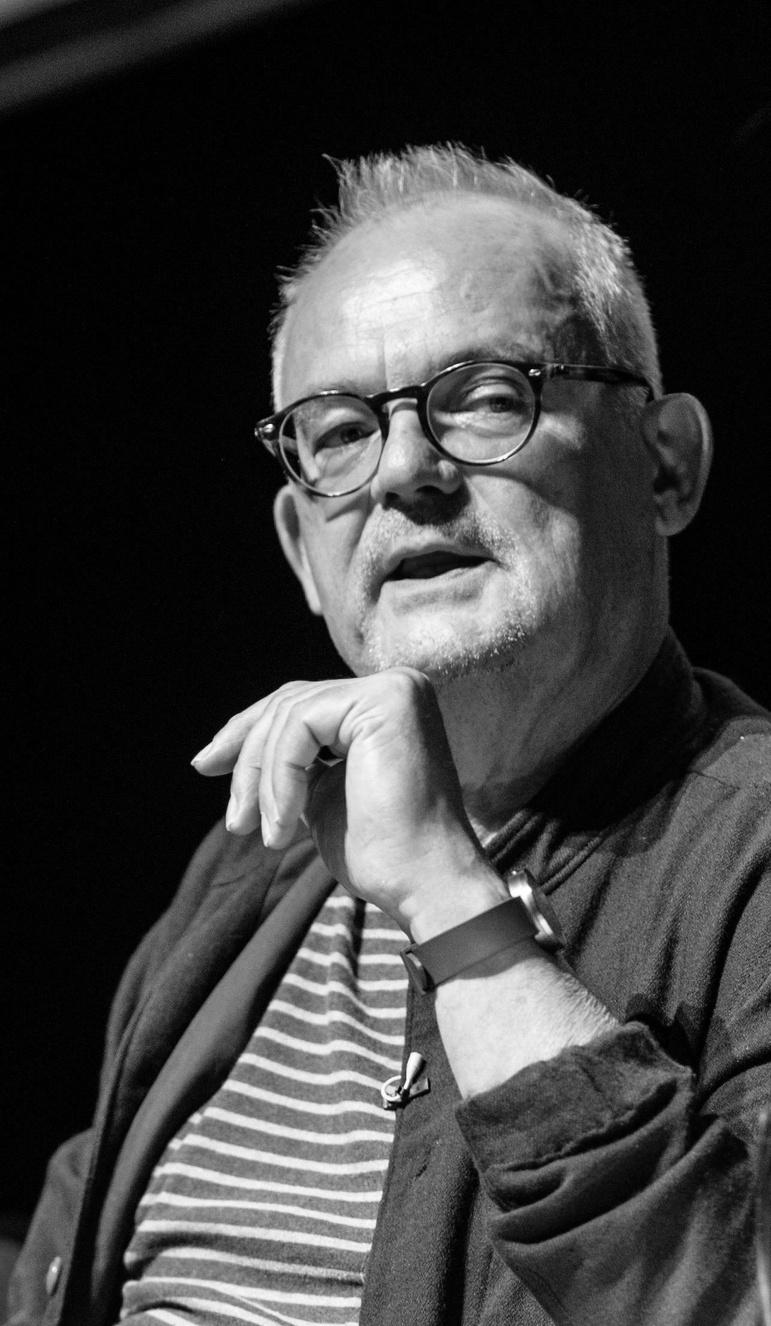
Jonothan is a National Teaching Fellow, Chair of Drama and Theatre Education and WBS Professor of Creative Education at the University of Warwick in the UK. He teaches the MA in Drama and Theatre Education which attracts students from all over the world. In addition to his academic profile, he is an experienced workshop leader and drama practitioner, with a national and international reputation for delivering high quality professional training and development opportunities. He has a particular interest in teaching classic and complex literary and dramatic texts through active and empowering pedagogy
Growing up as a Taiwanese-American within the colourful cacophony of Shanghai, China, Elana was a true third culture kid before going on to pursue my BA and MA in drama education in the UK. For her, theatre is less about performing on stage and more about the transformation it can make within people and within spaces.
The theatre that resonates the most with me is the kind that takes place in people and their own individual growth. Elana now works as a freelancer with schools, nonprofits and arts centres nternationally to develop programmes and workshops that focus on fostering creative self expression and confidence. ISTA was a large inspiration for me as a student, and I am excited to have the opportunity to give back and grow together as a board member alongside this wonderful organisation.


In her work as International Program Director at the Makhampom Theatre, Ap designs and facilitates applied theatre workshops for international participants, students, teachers, artists, and activists; intending to build cross-cultural understanding and motivate participants to take action towards solving global problems. Ap has worked in theatre and cross-cultural exchange on applied arts for community development for over 10 years, always aiming to promote social change
Jess is a director, lecturer and author and is currently in post as Associate Director at Dundee Rep and Scottish Dance Theatre. Jess is also Co-Executive Producer and Co-Artistic Director of Glass Performance, a theatre company that makes performance work inspired by people and place. She was Co-Artistic Director of the award-winning young people’s theatre collective Junction 25 between 2006-2020.
Jess is currently the Lecturer in the Arts in Justice at the Royal Conservatoire of Scotland and founder member and trustee of the Scottish charity Justice and Arts Scotland (formally Scottish Prison Arts Network).
Jess is currently part of the BBC Expert Women programme and was recently selected as a Big Issue Magazine Change-Maker. She writes regularly about theatre and the arts in social contexts and in 2019 Bloomsbury published her first book A Beginners Guide to Devising Theatre co-written with Tashi Gore.



